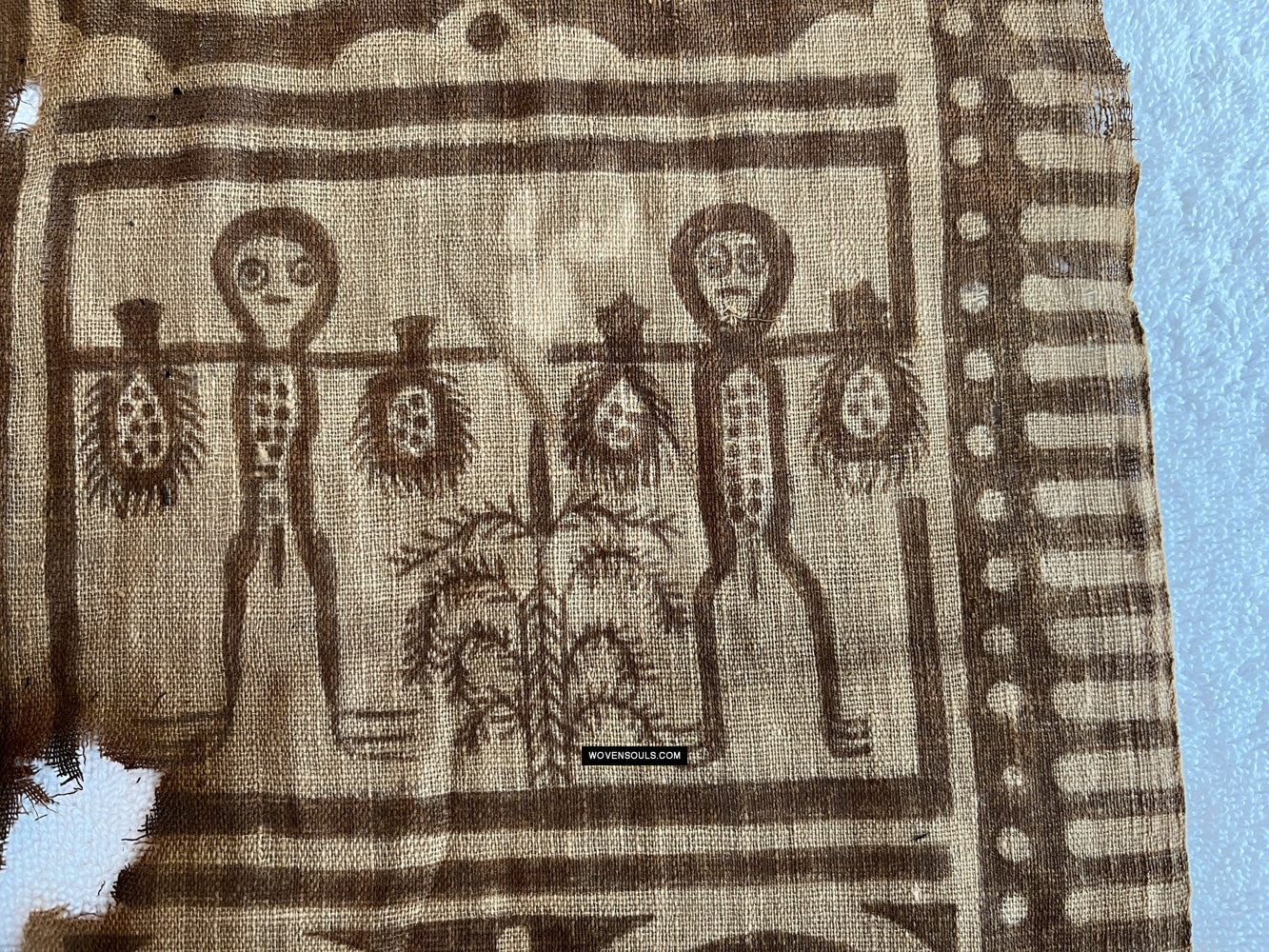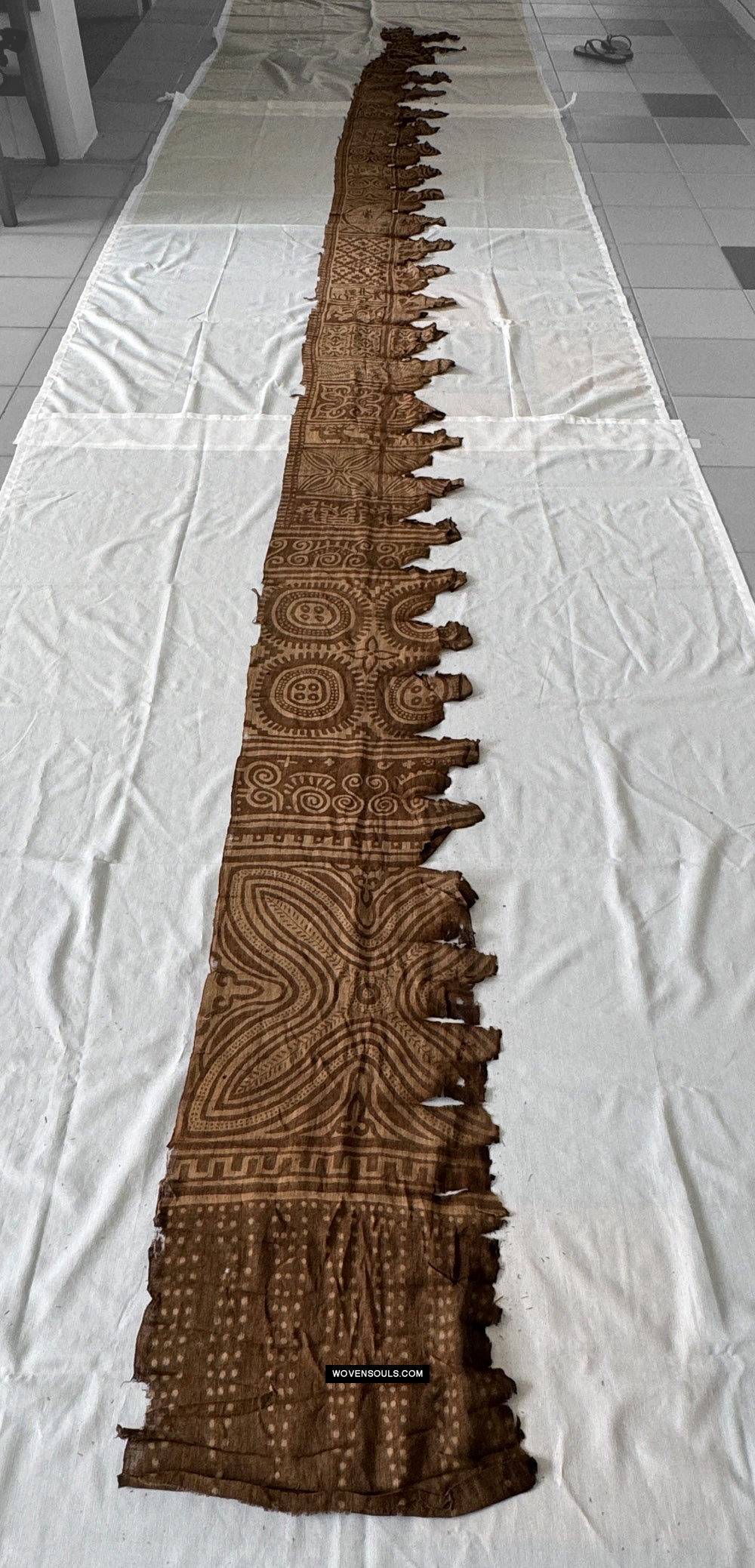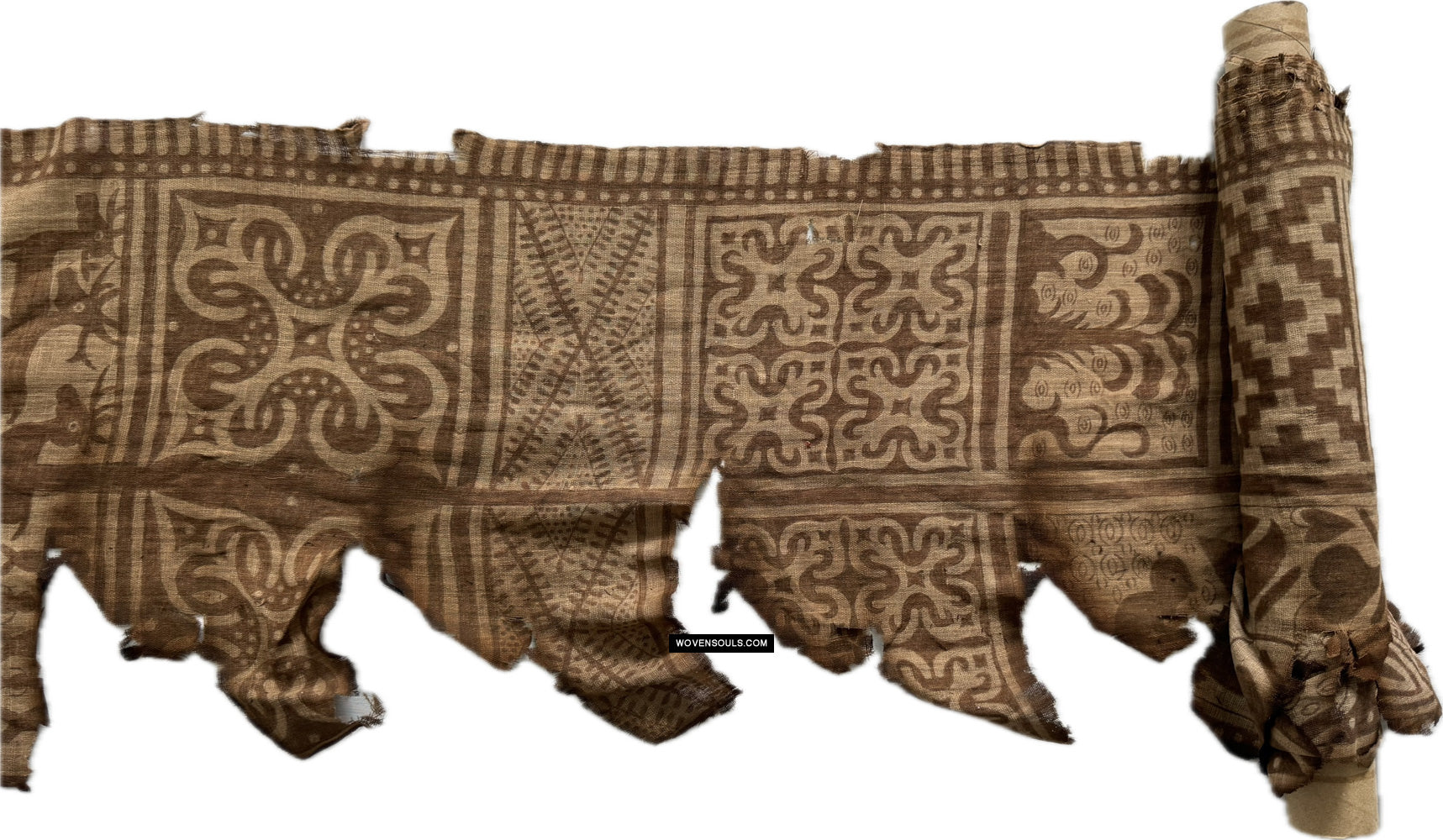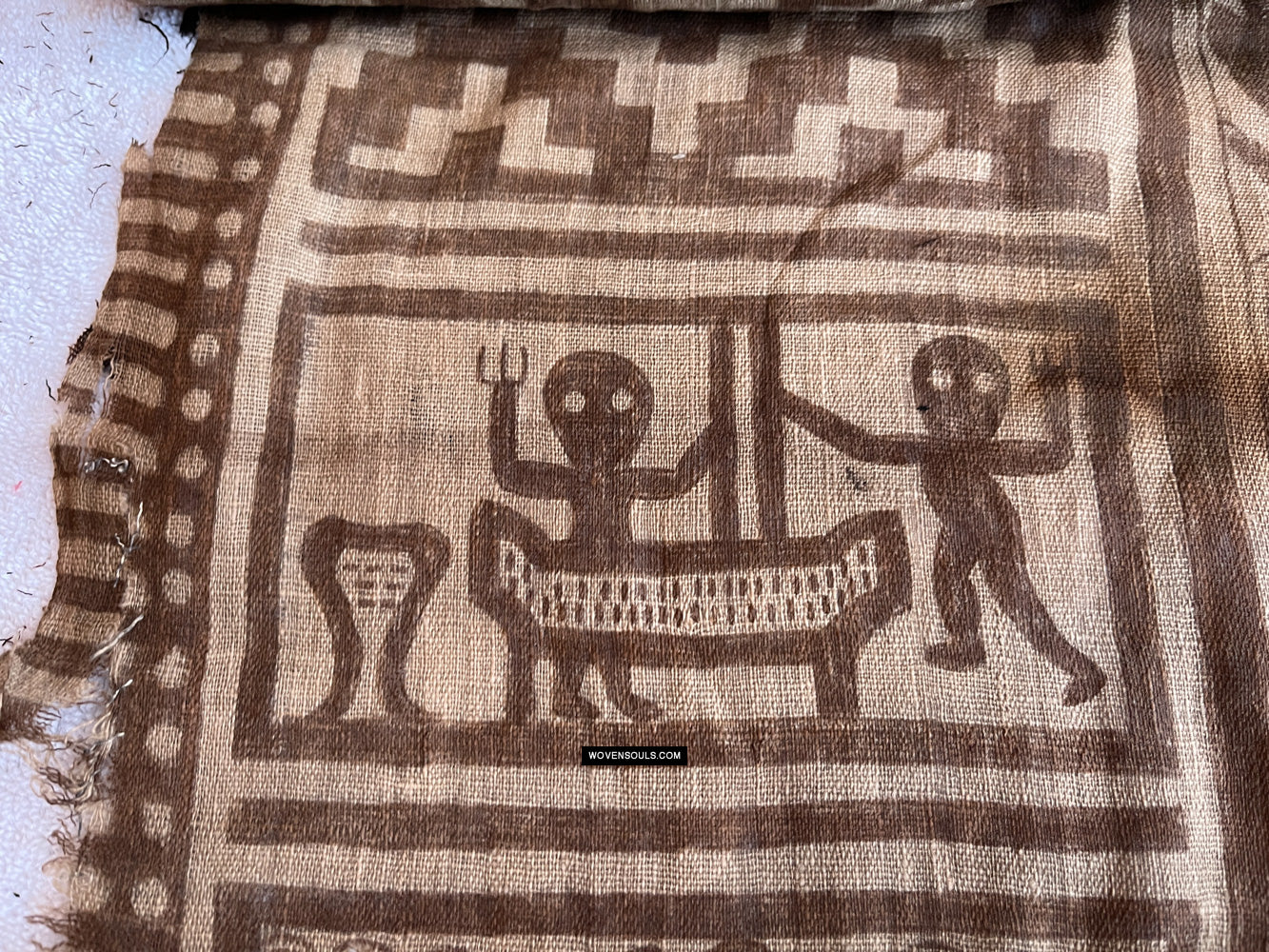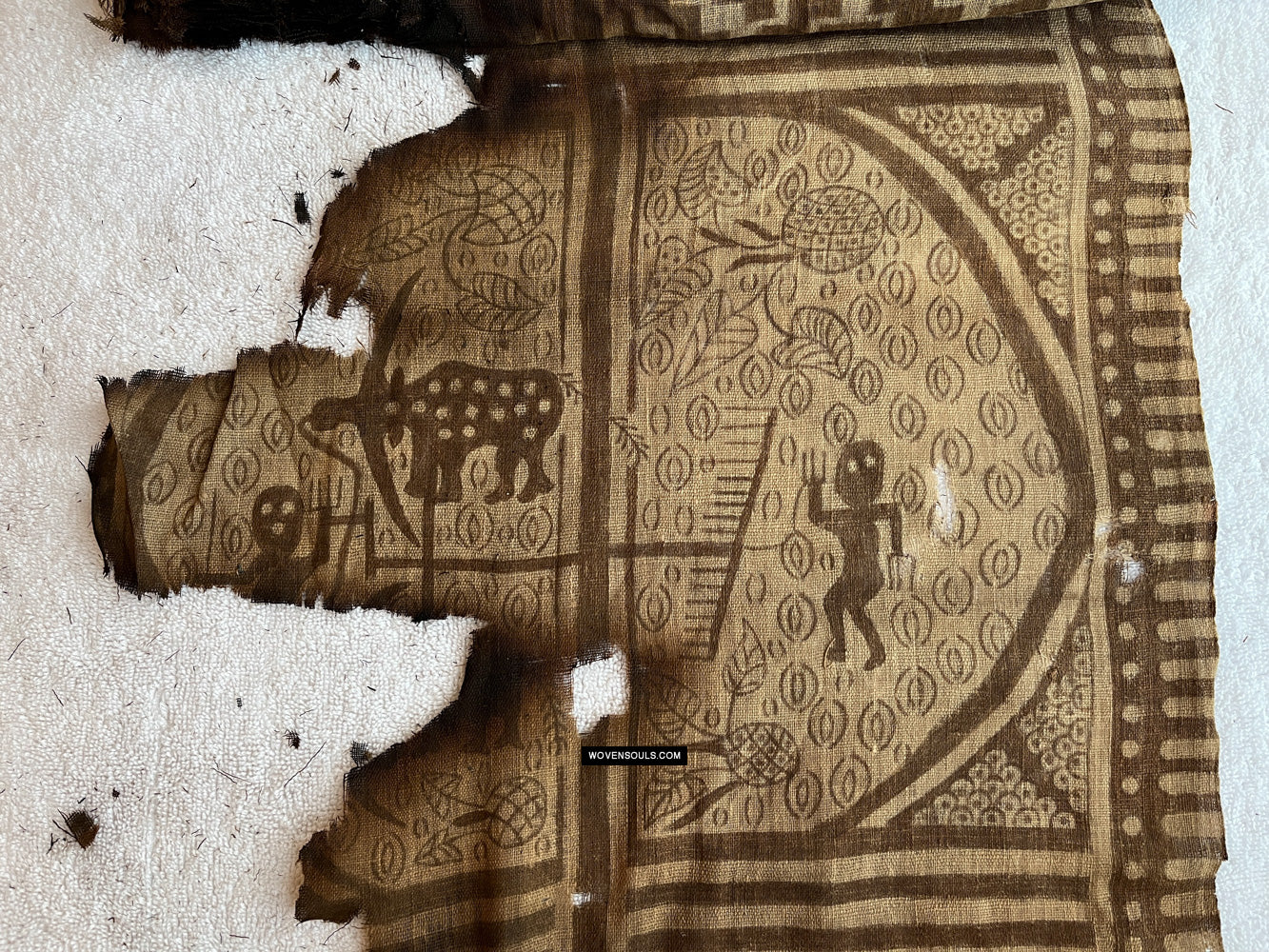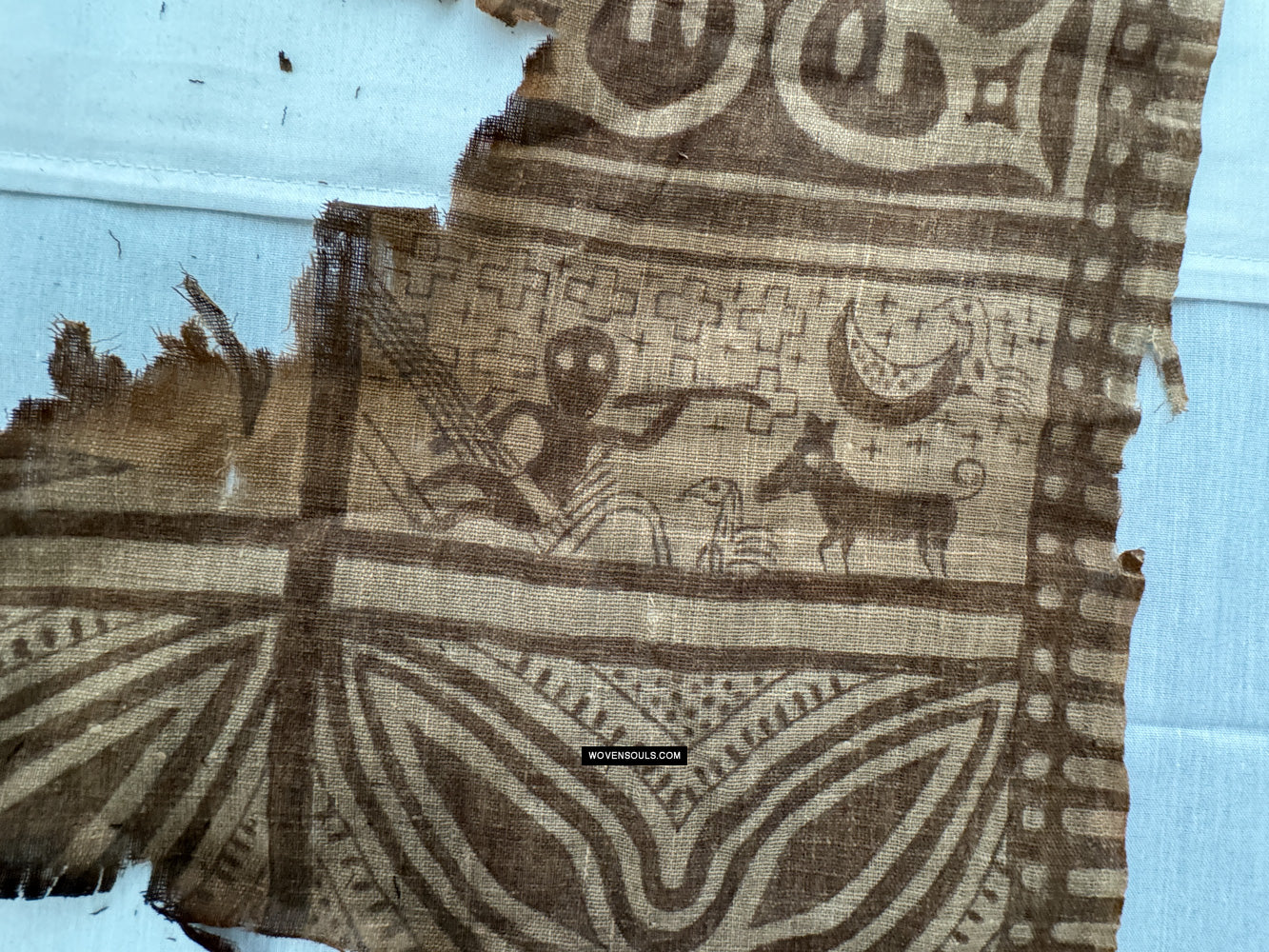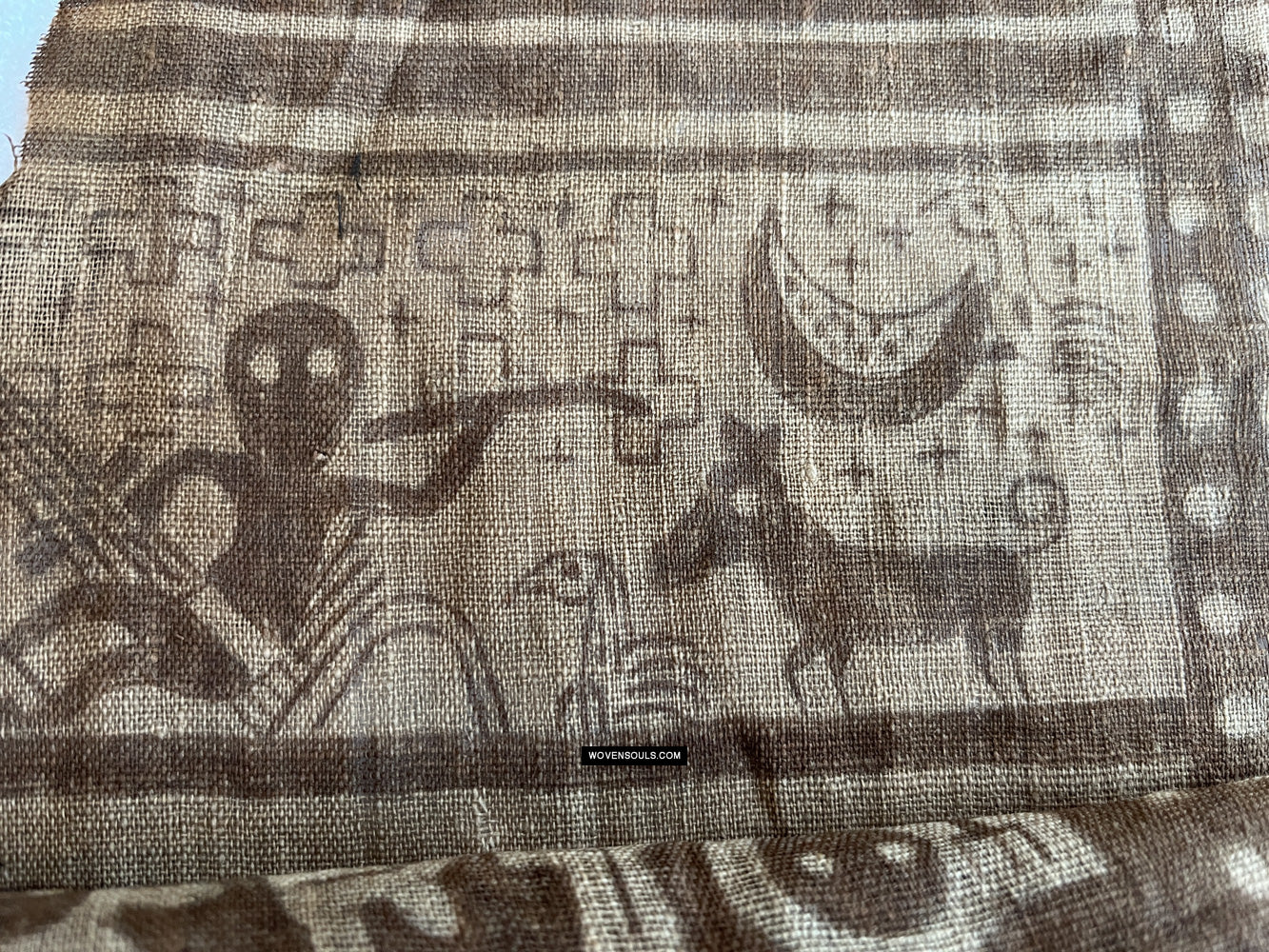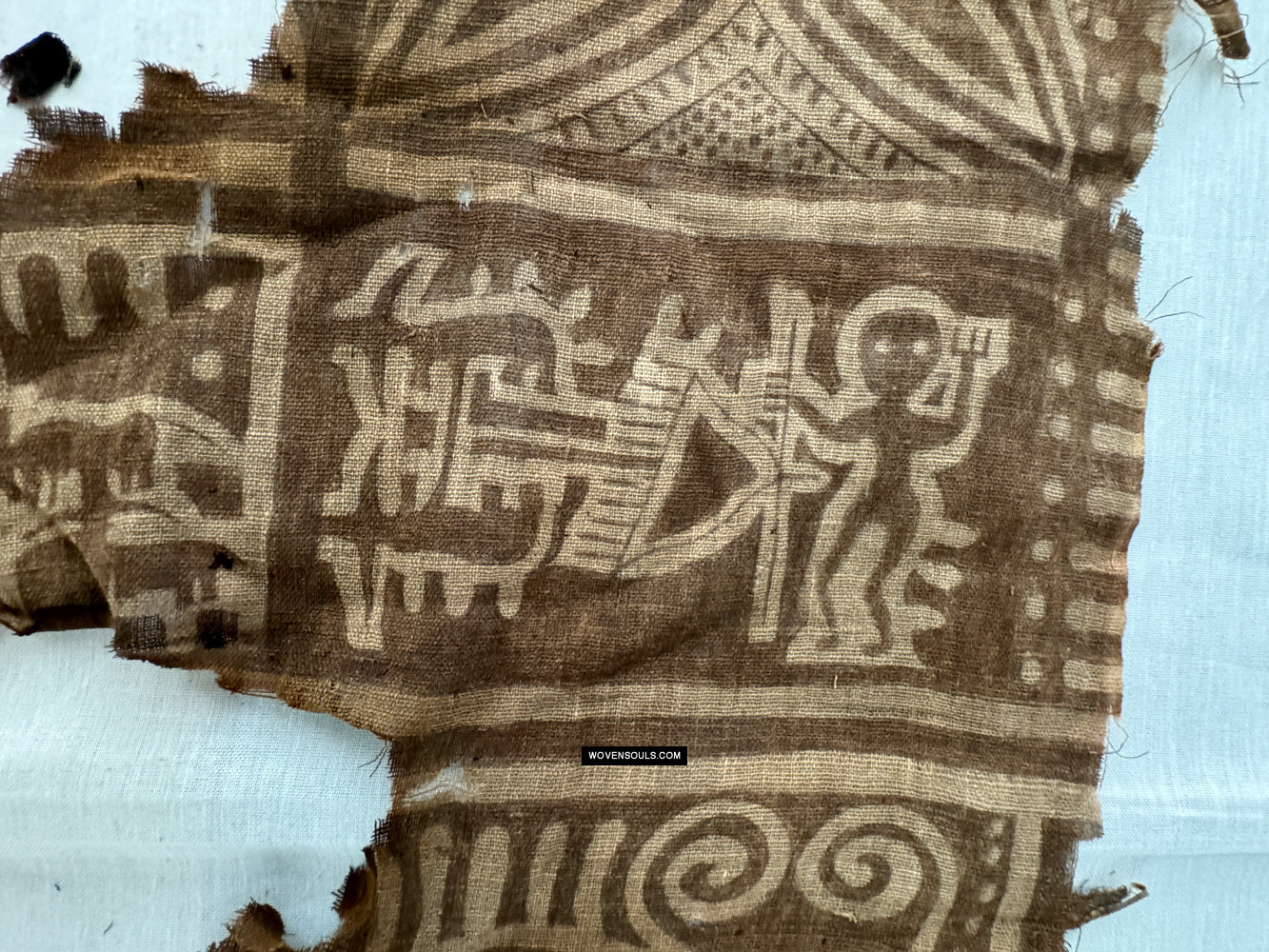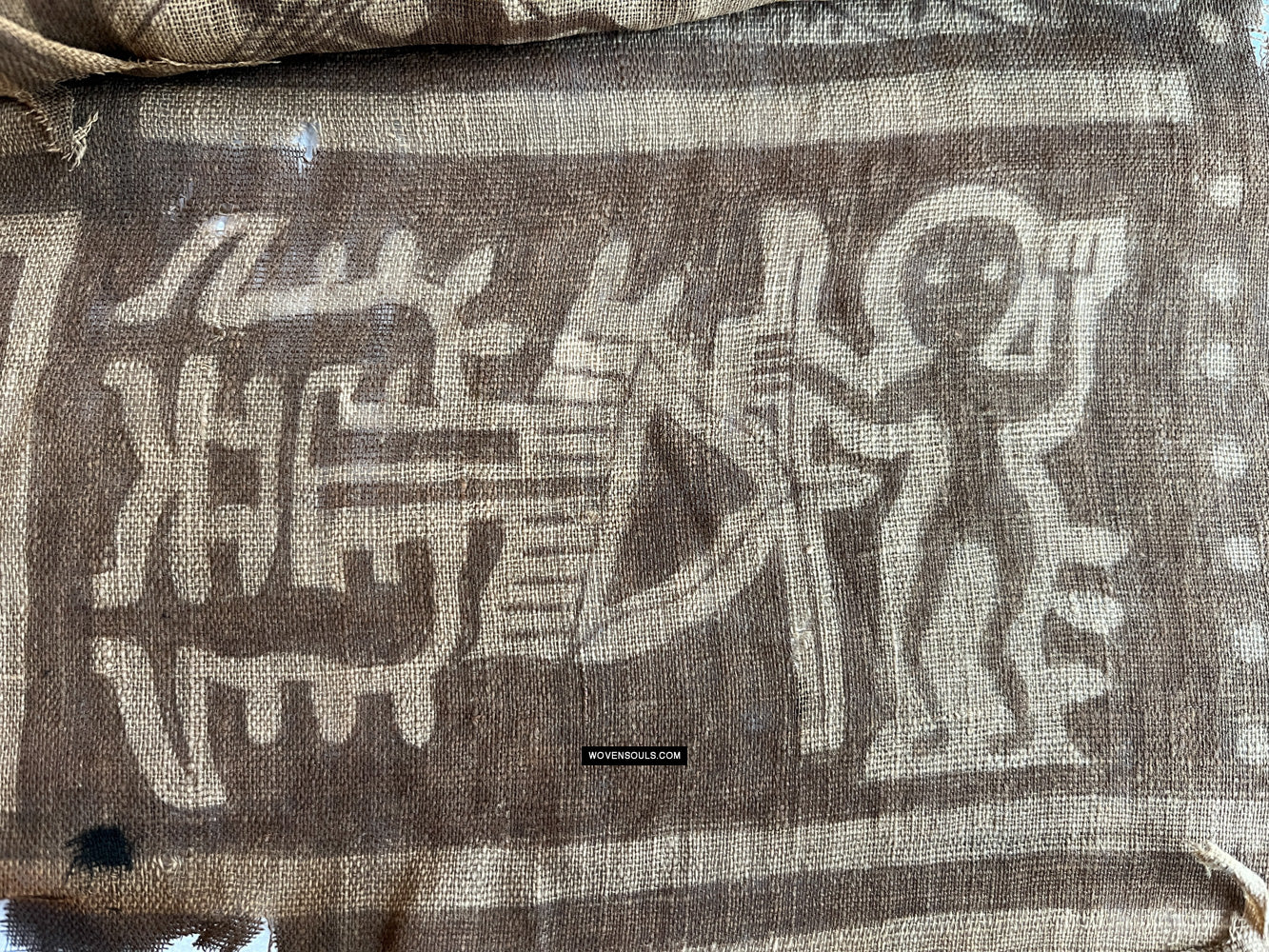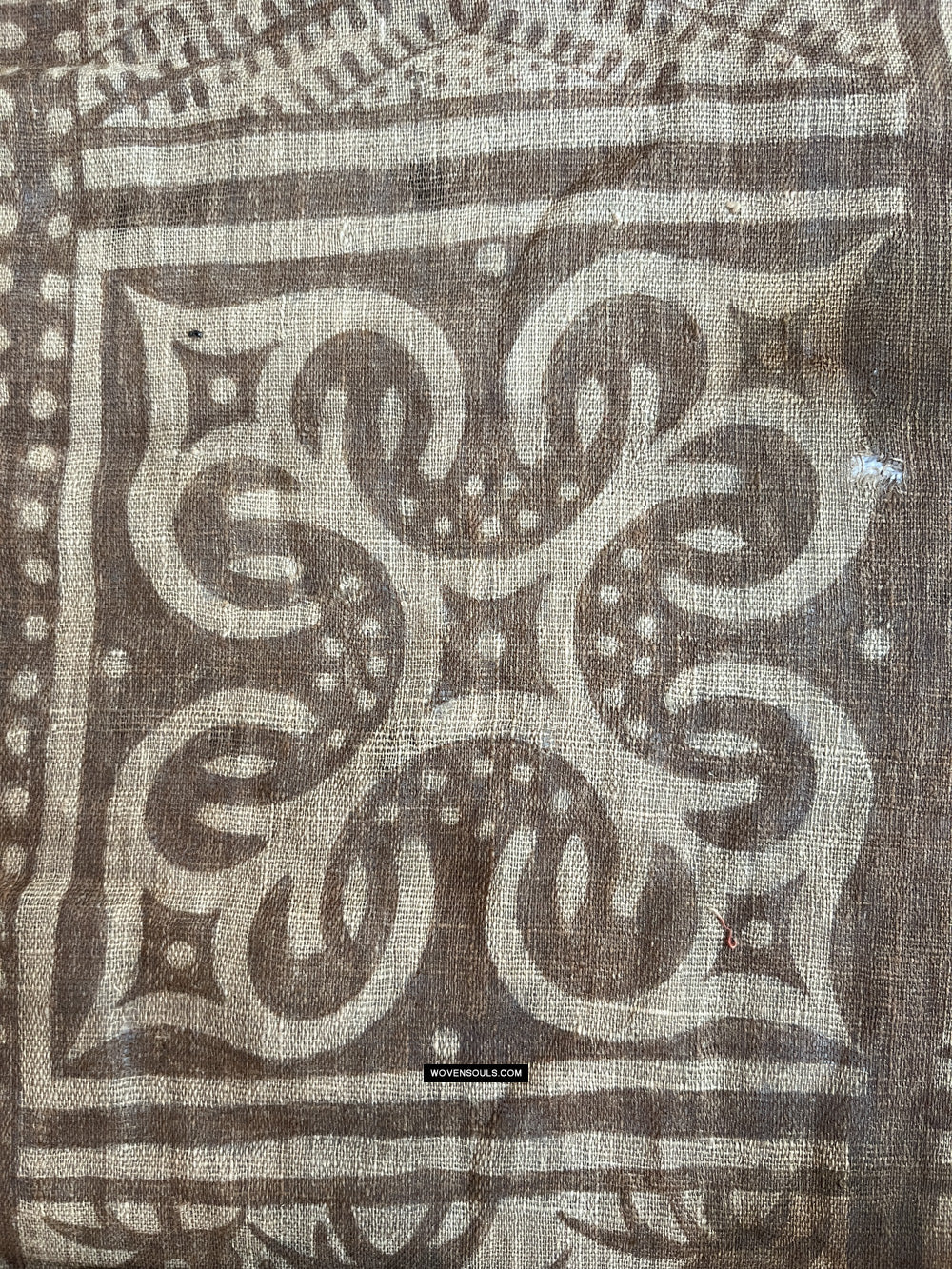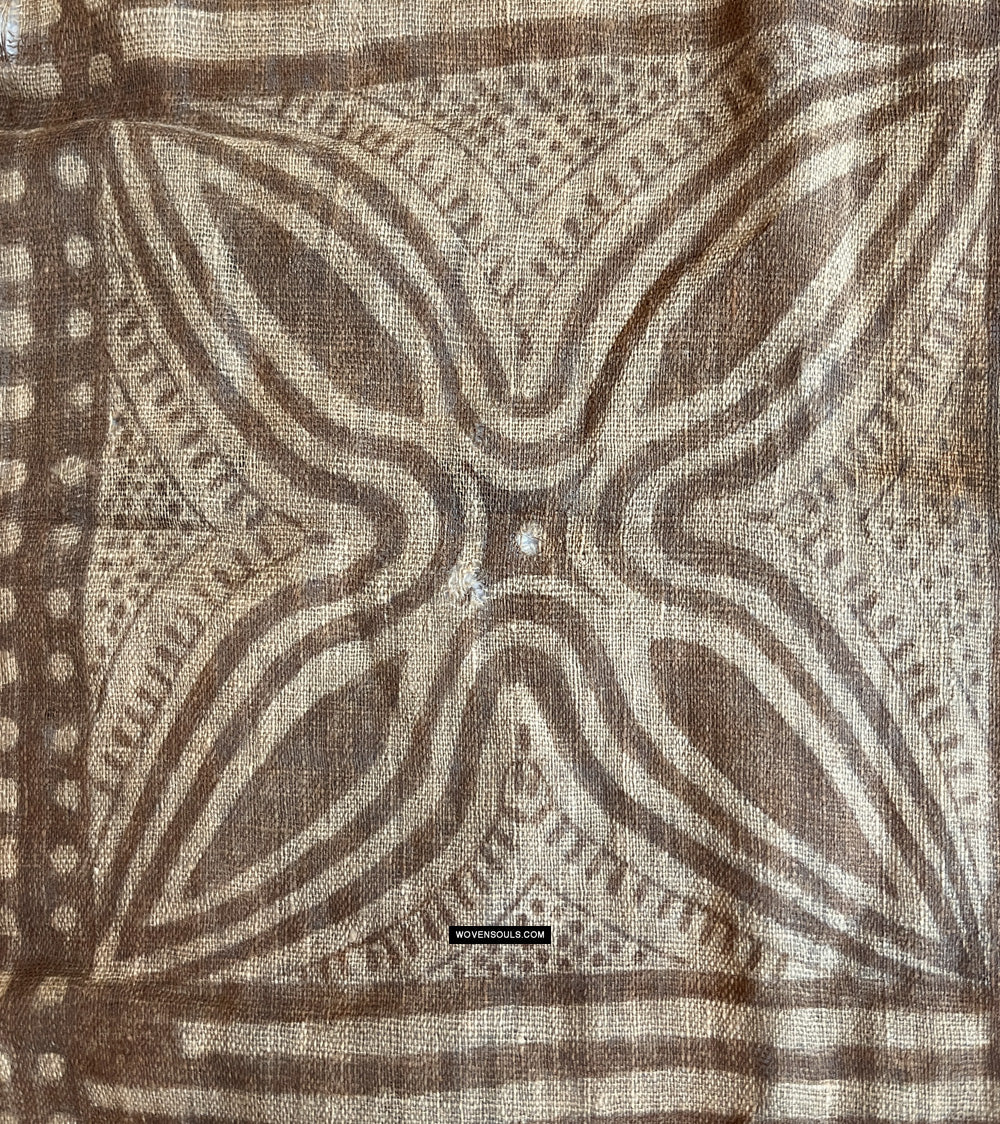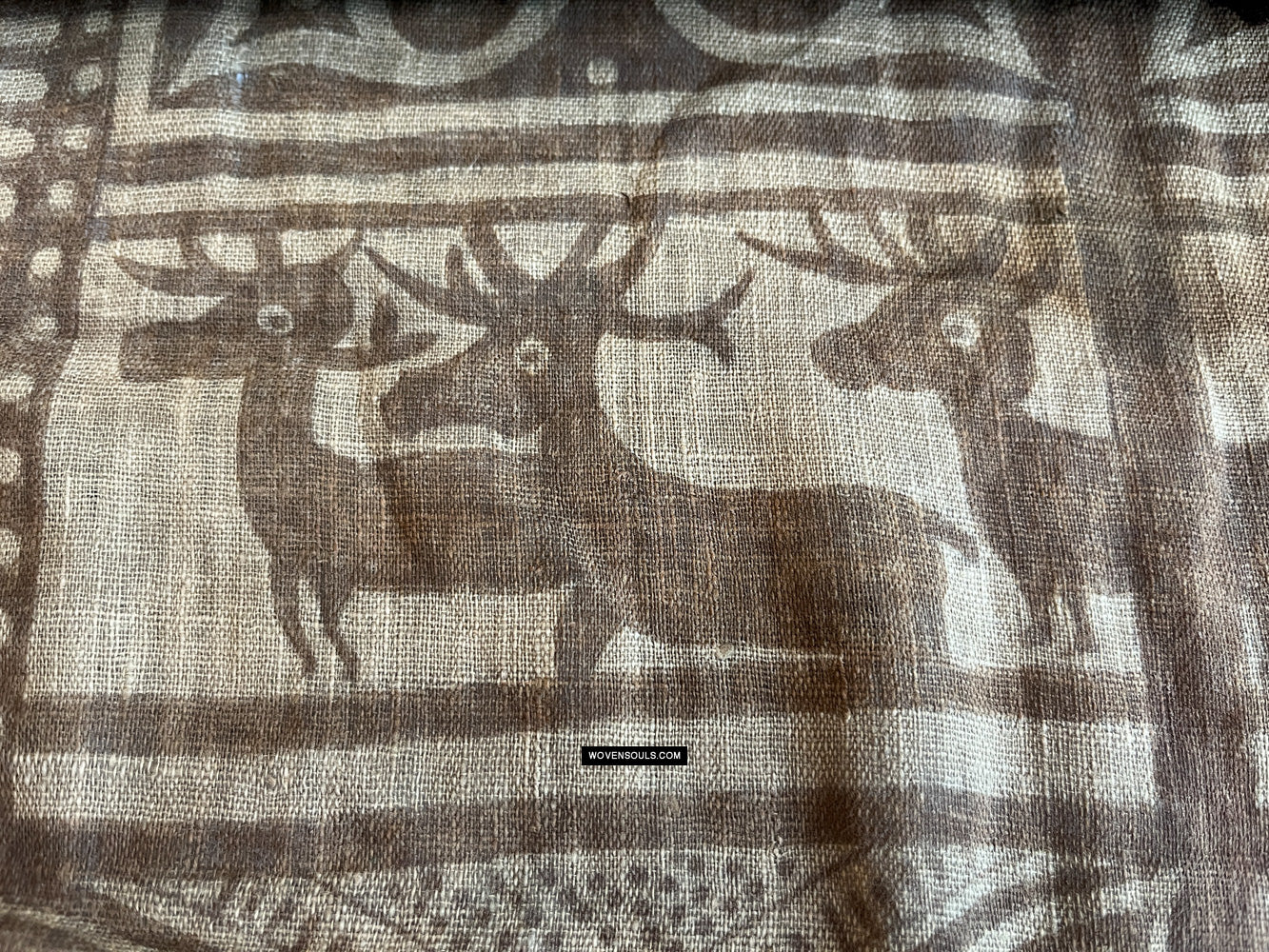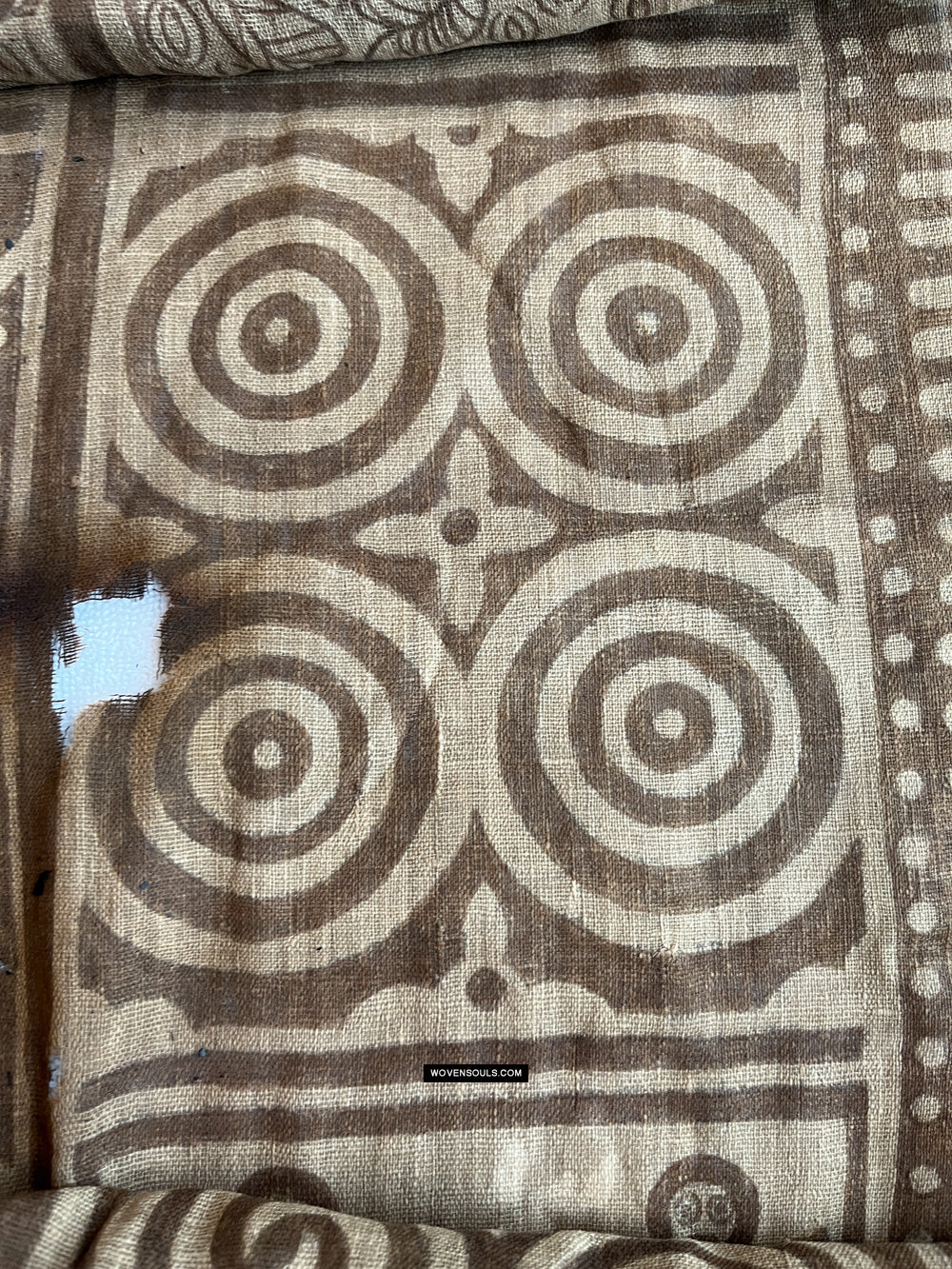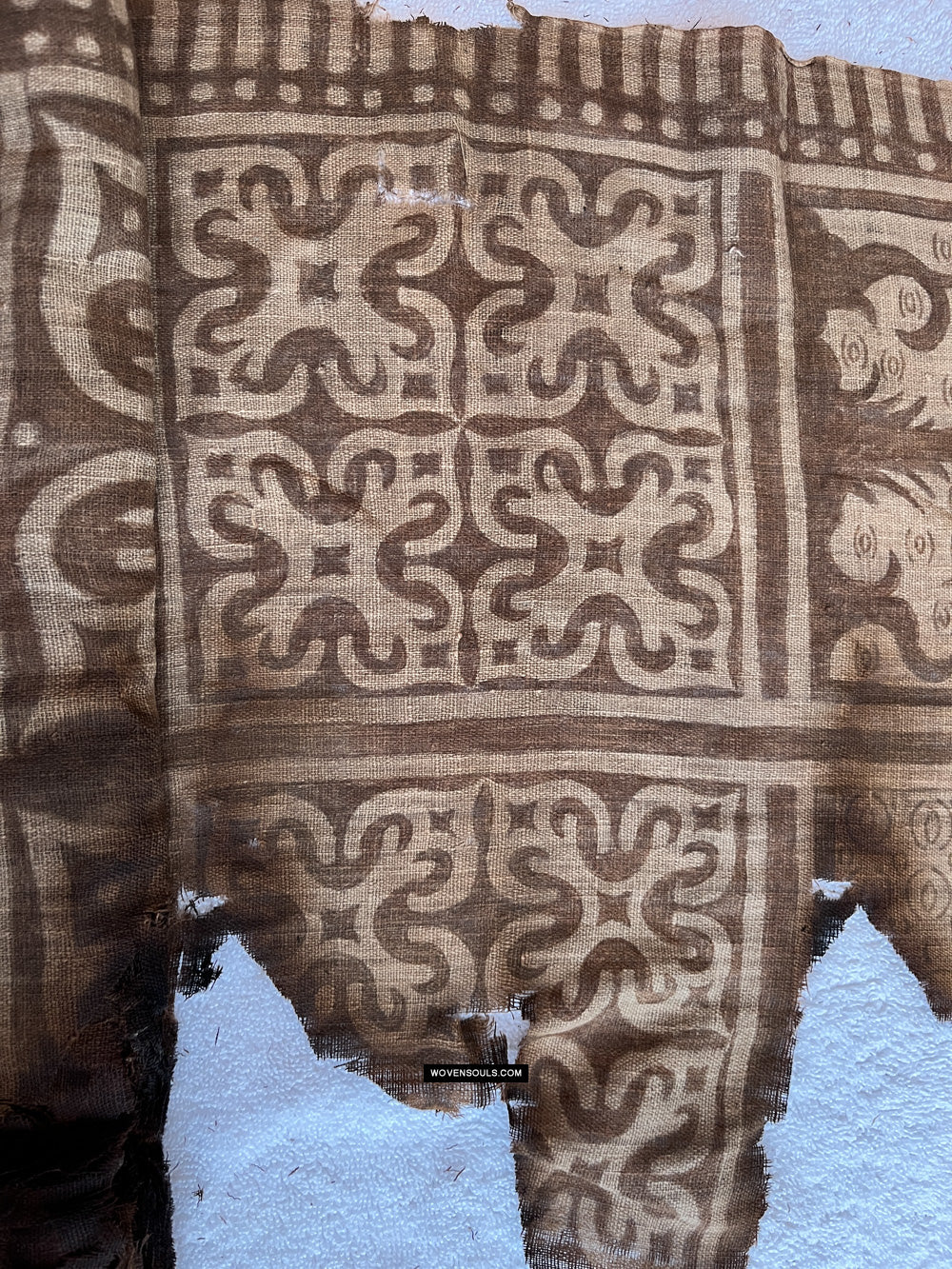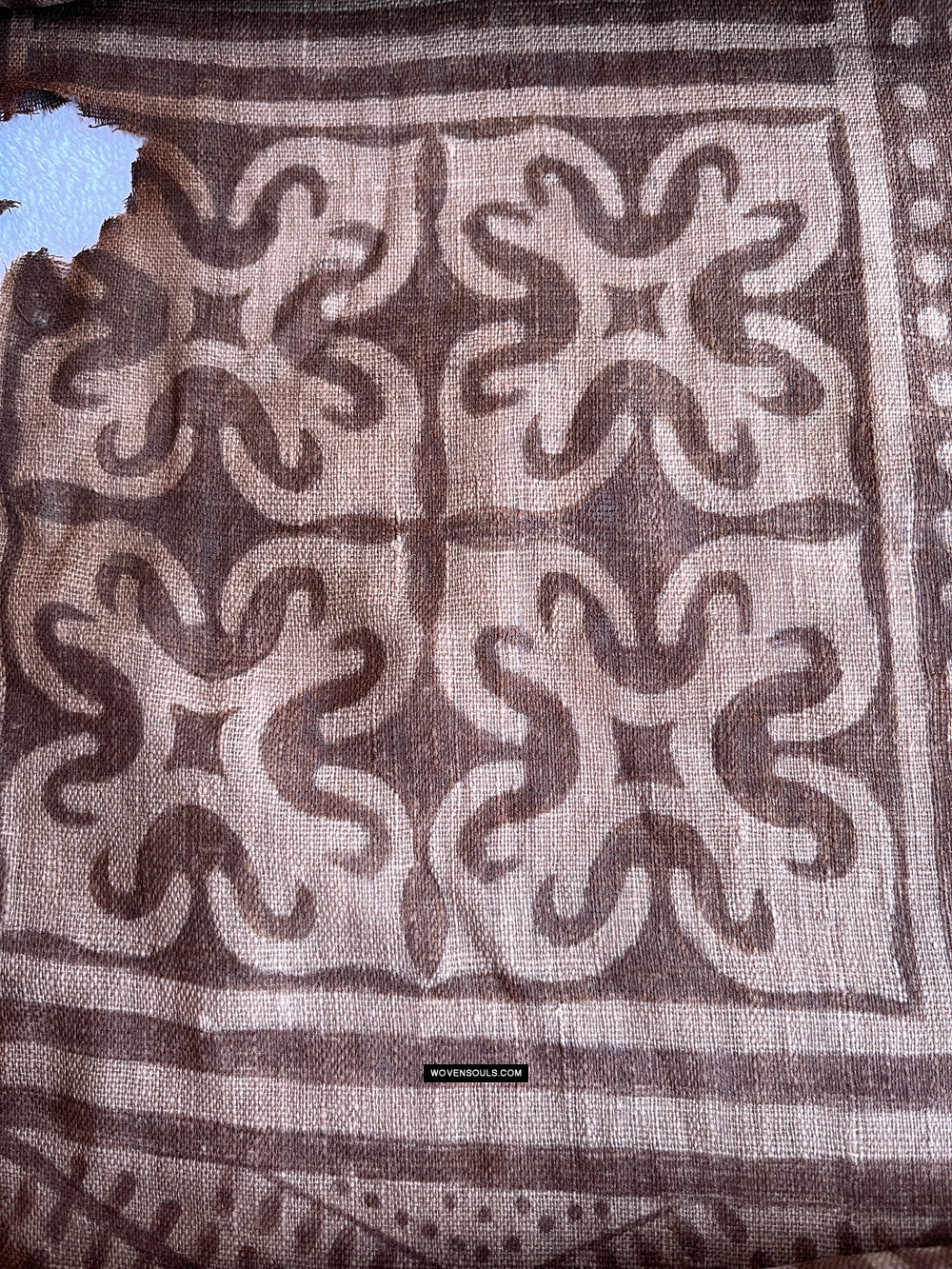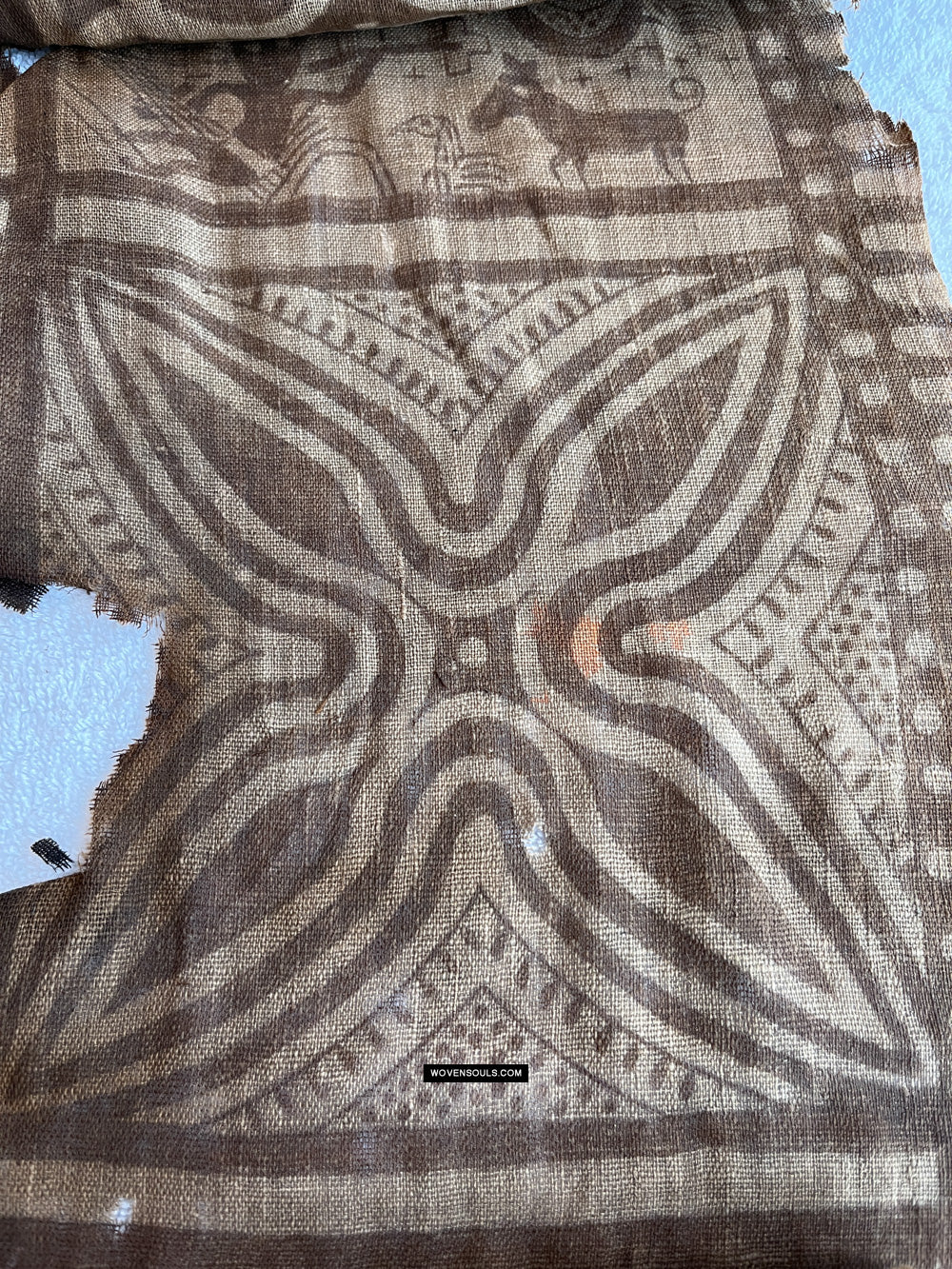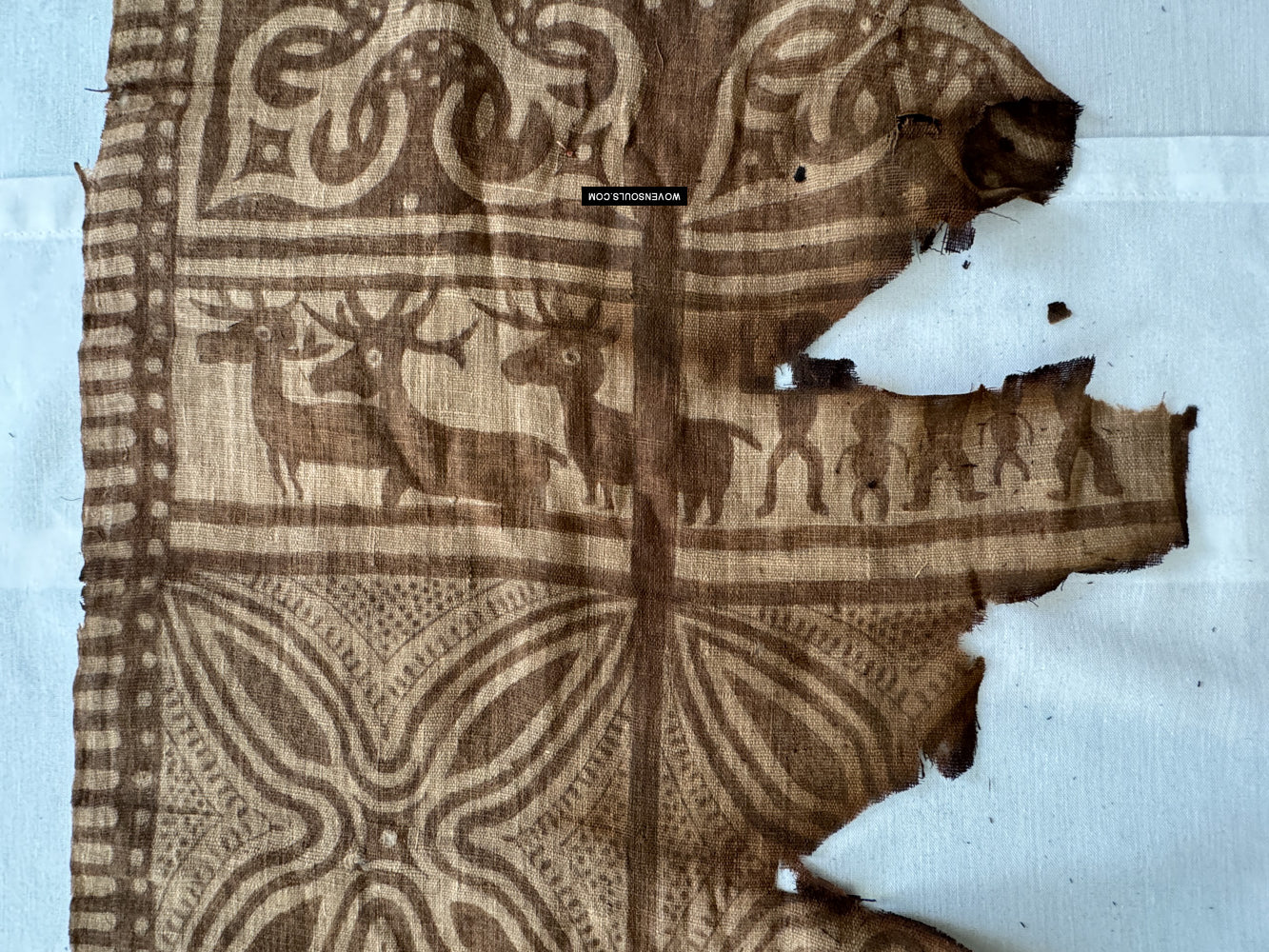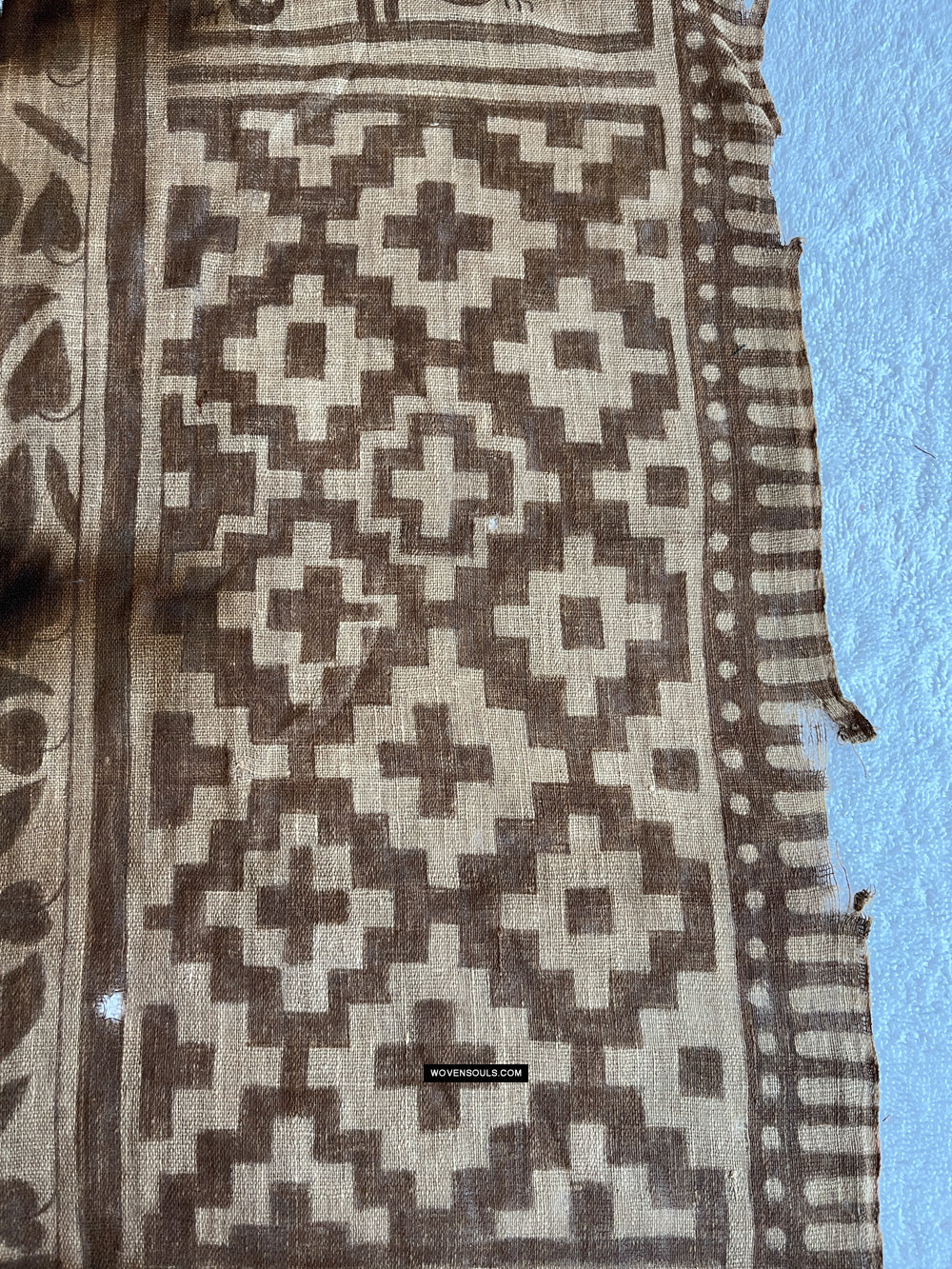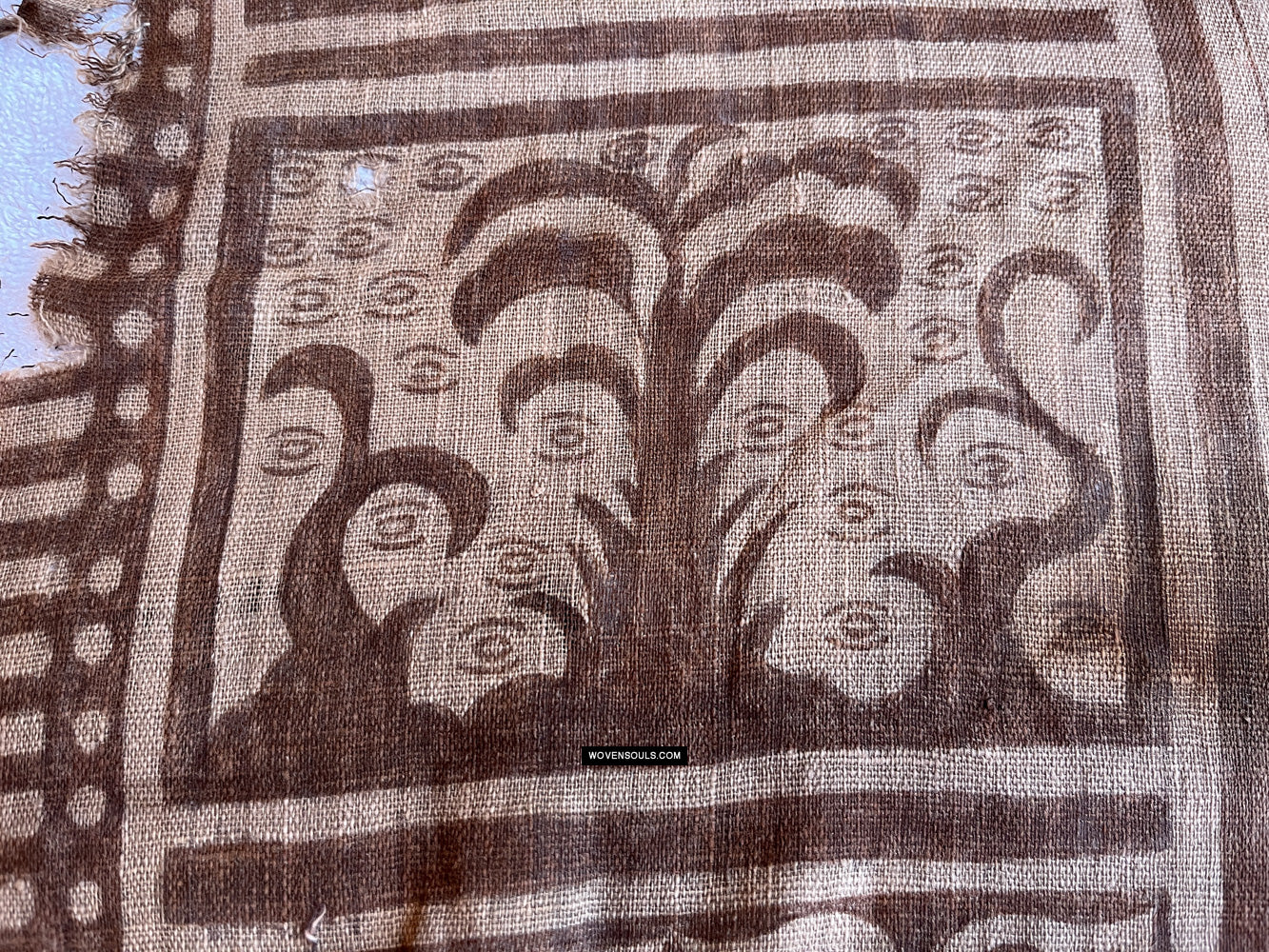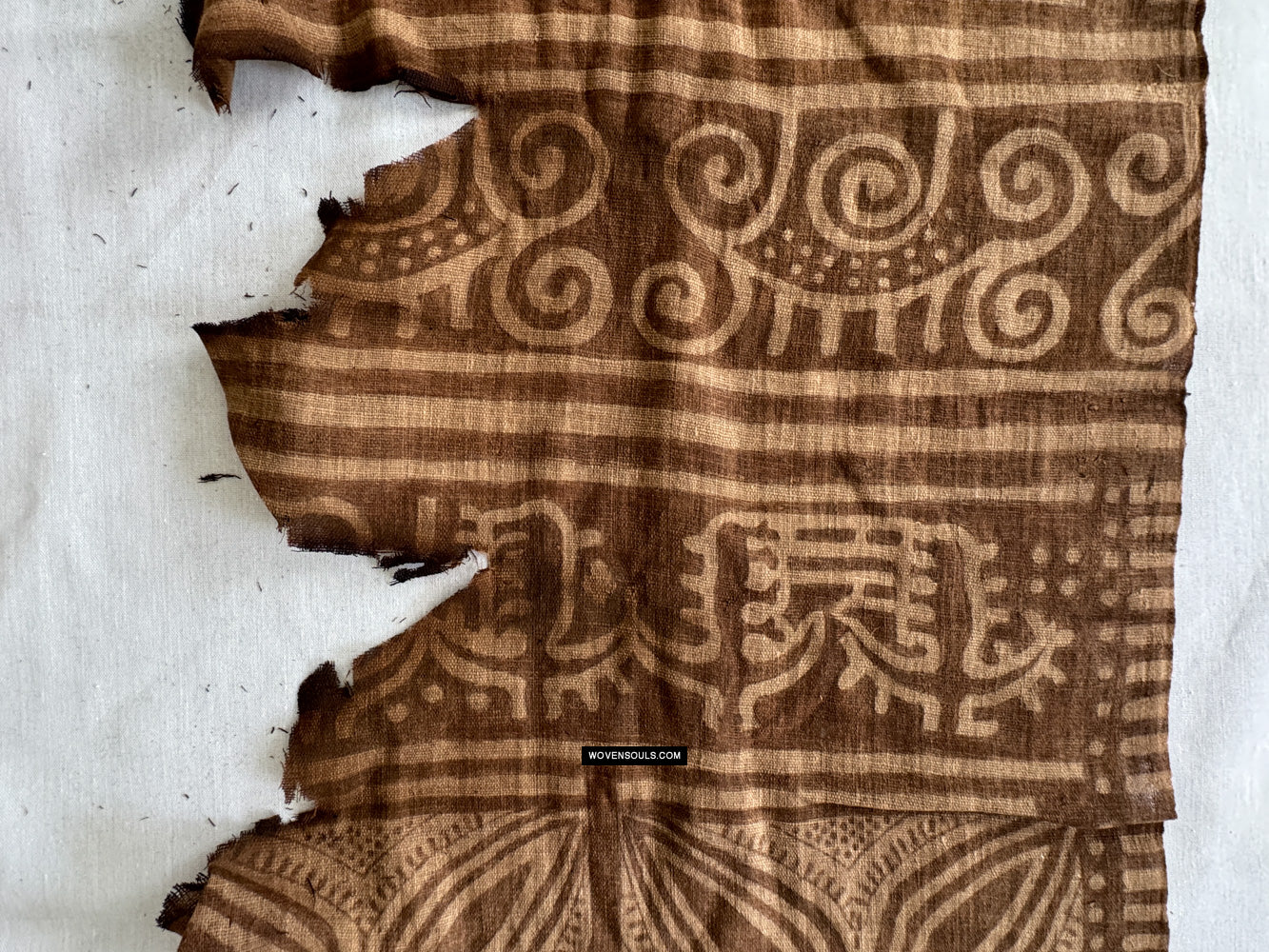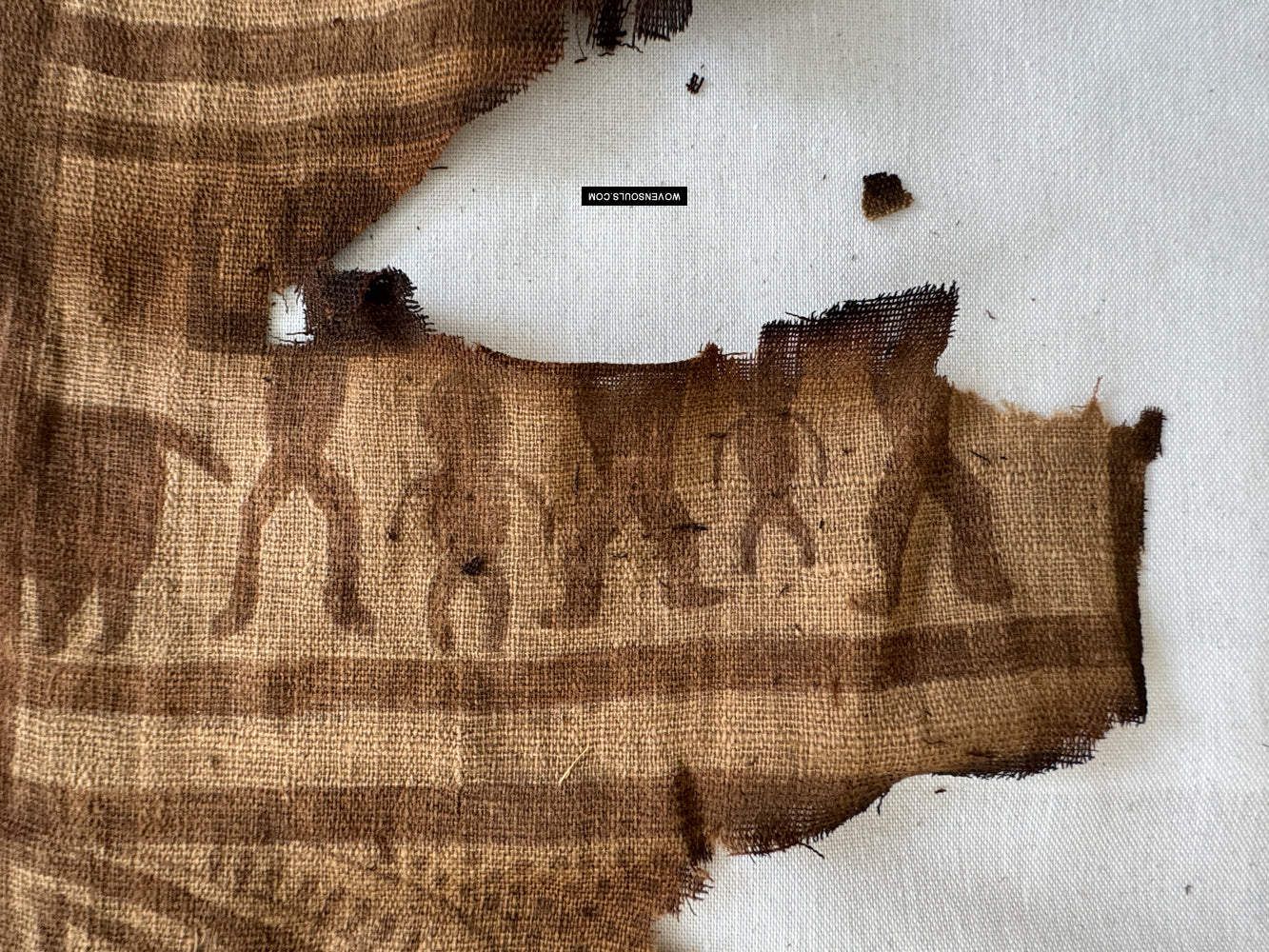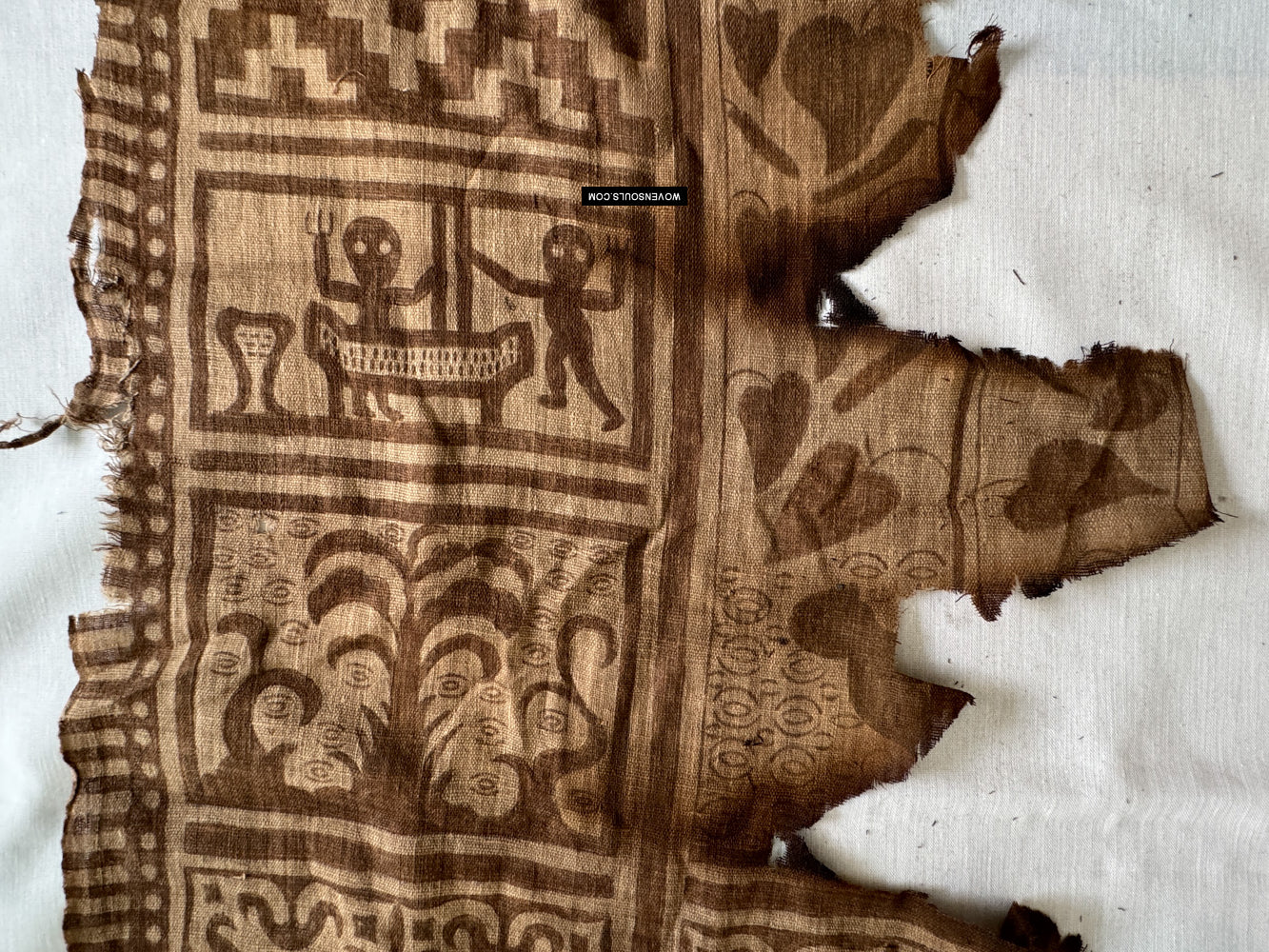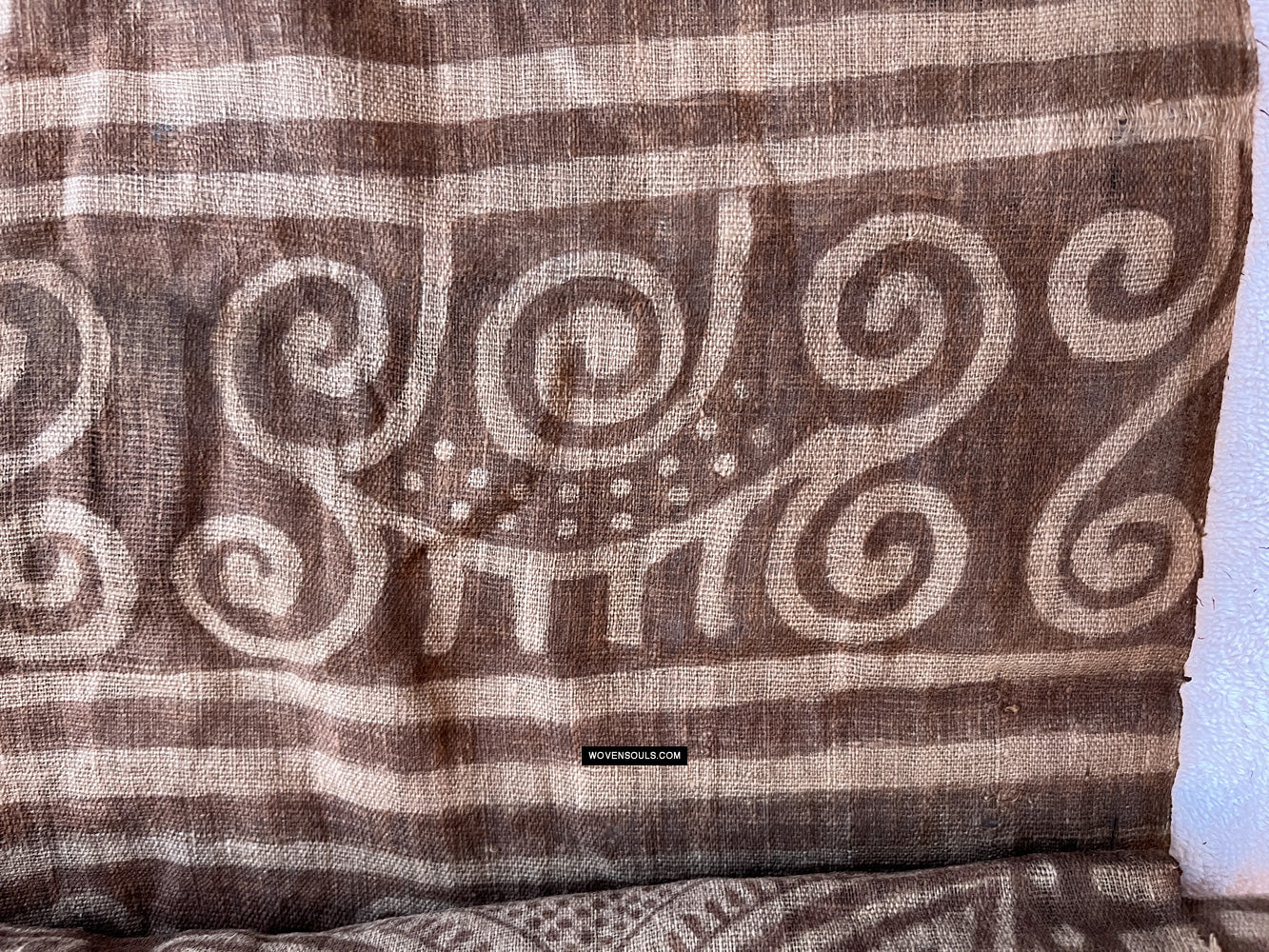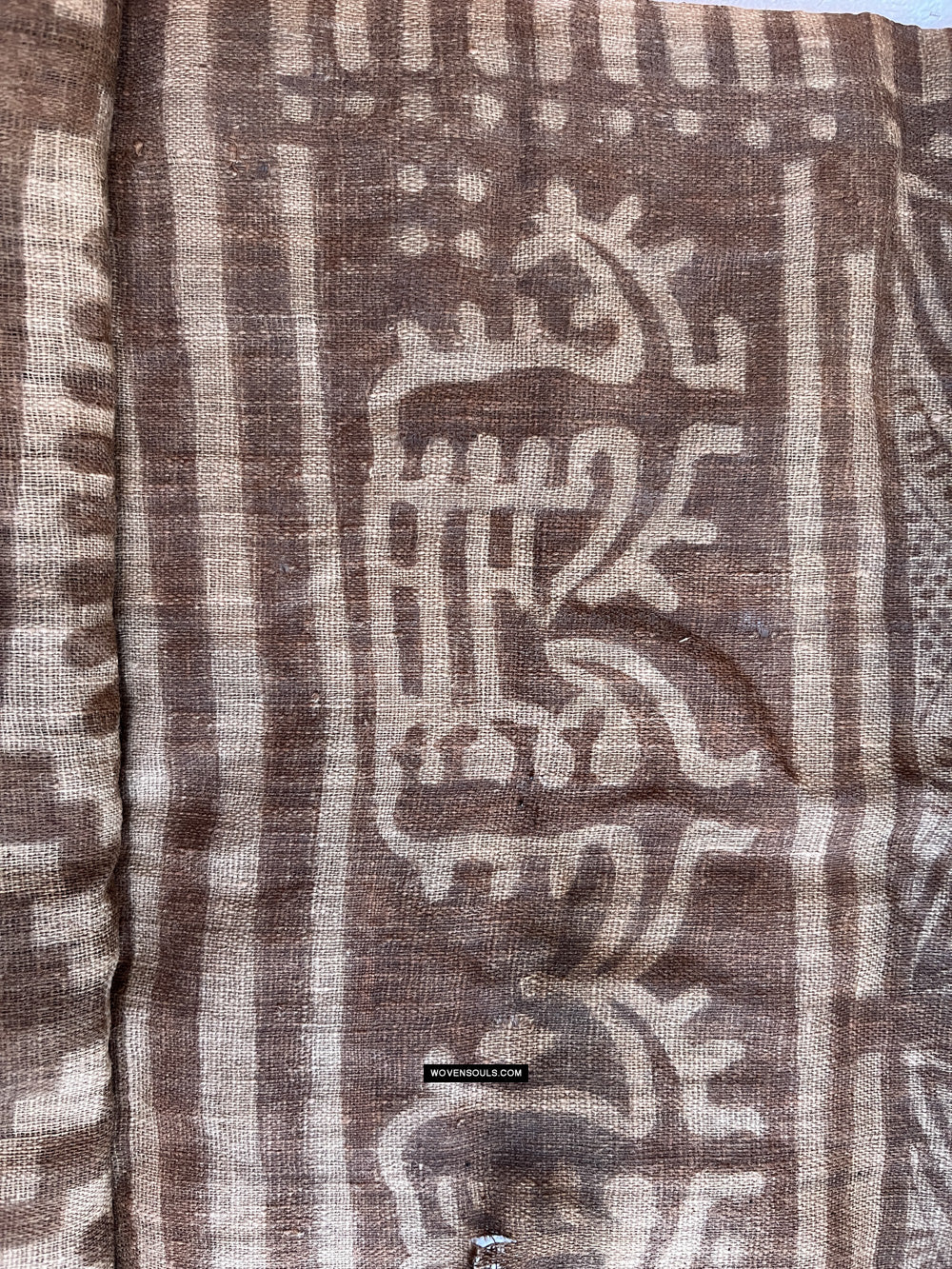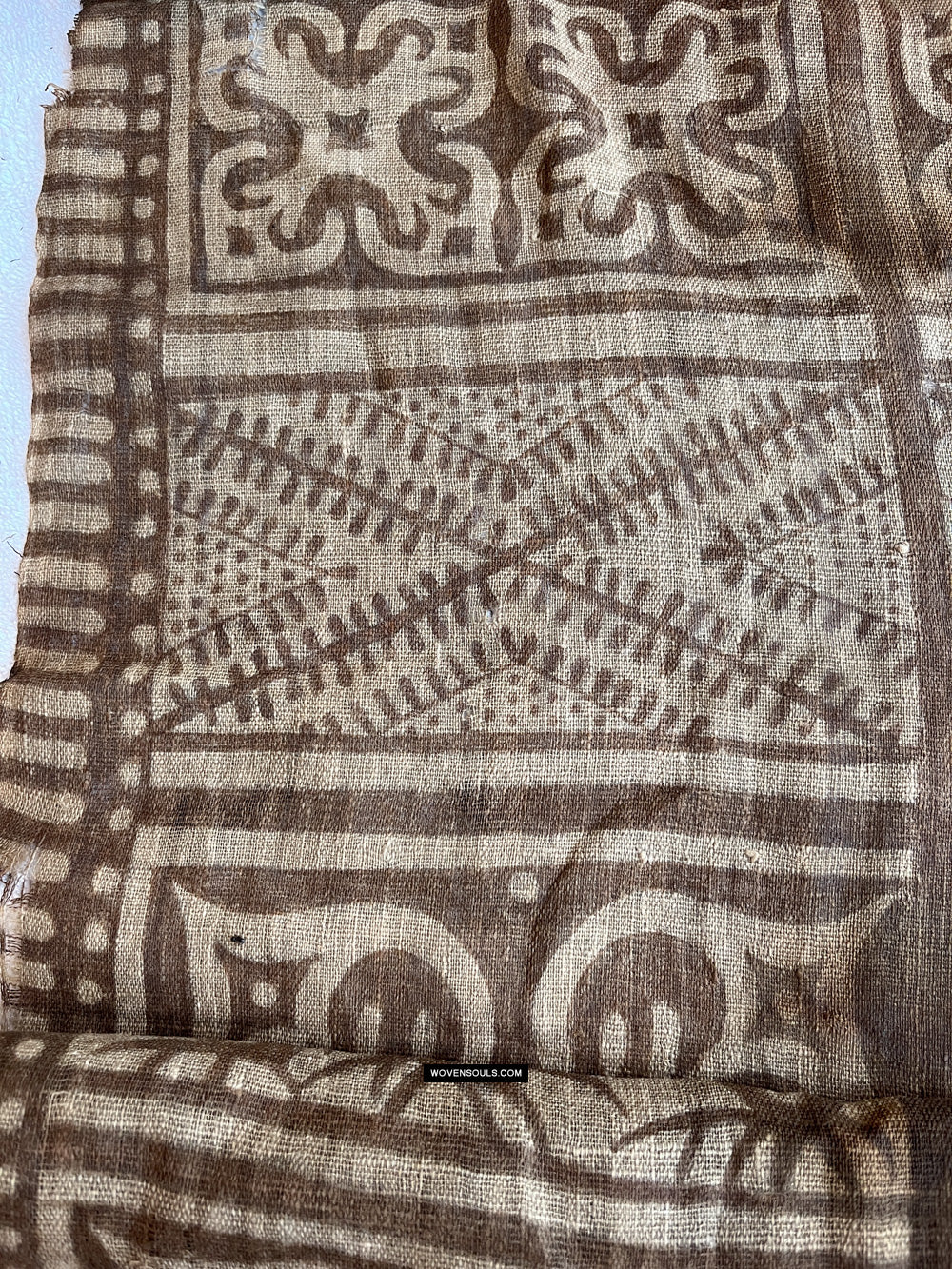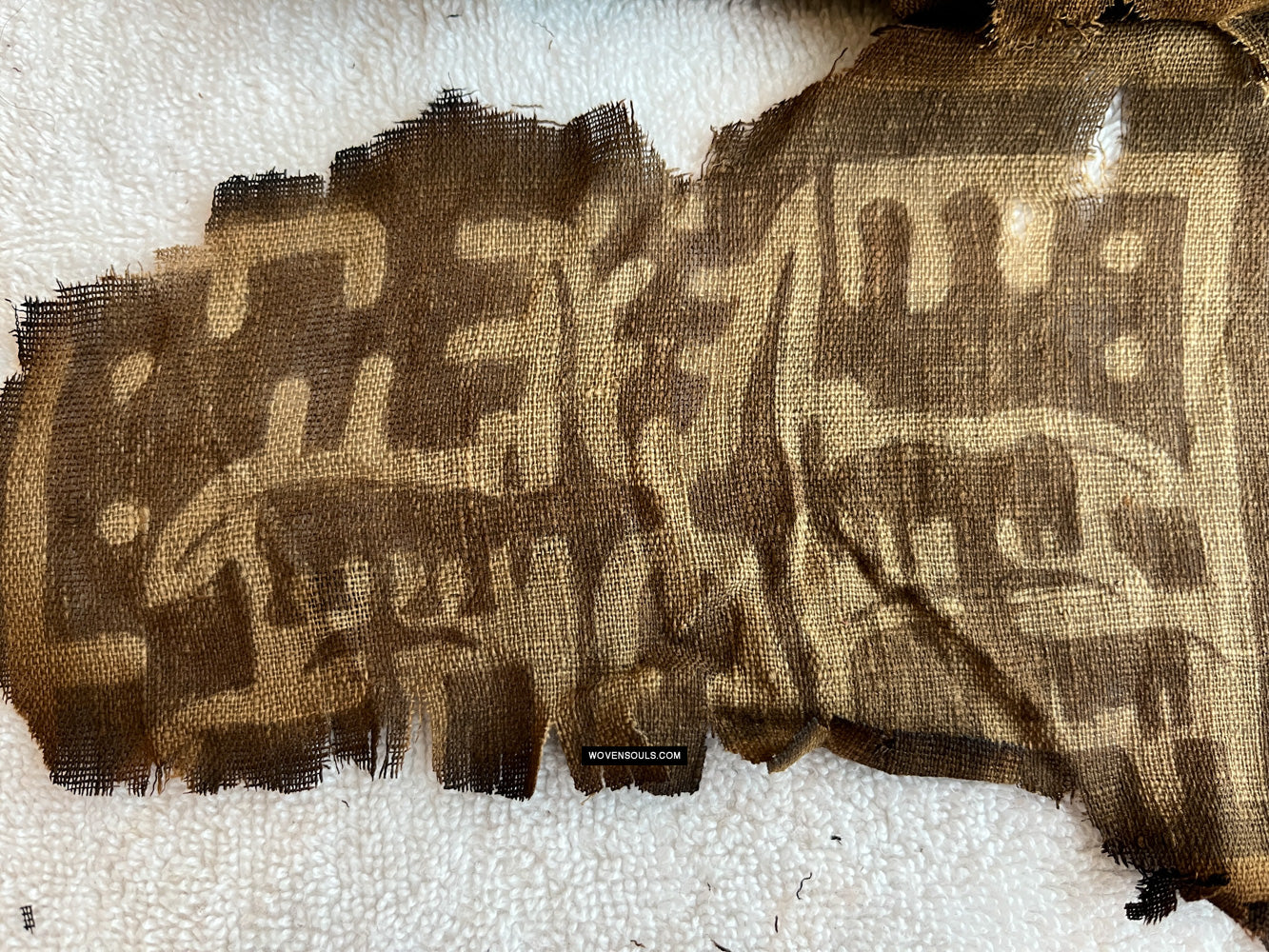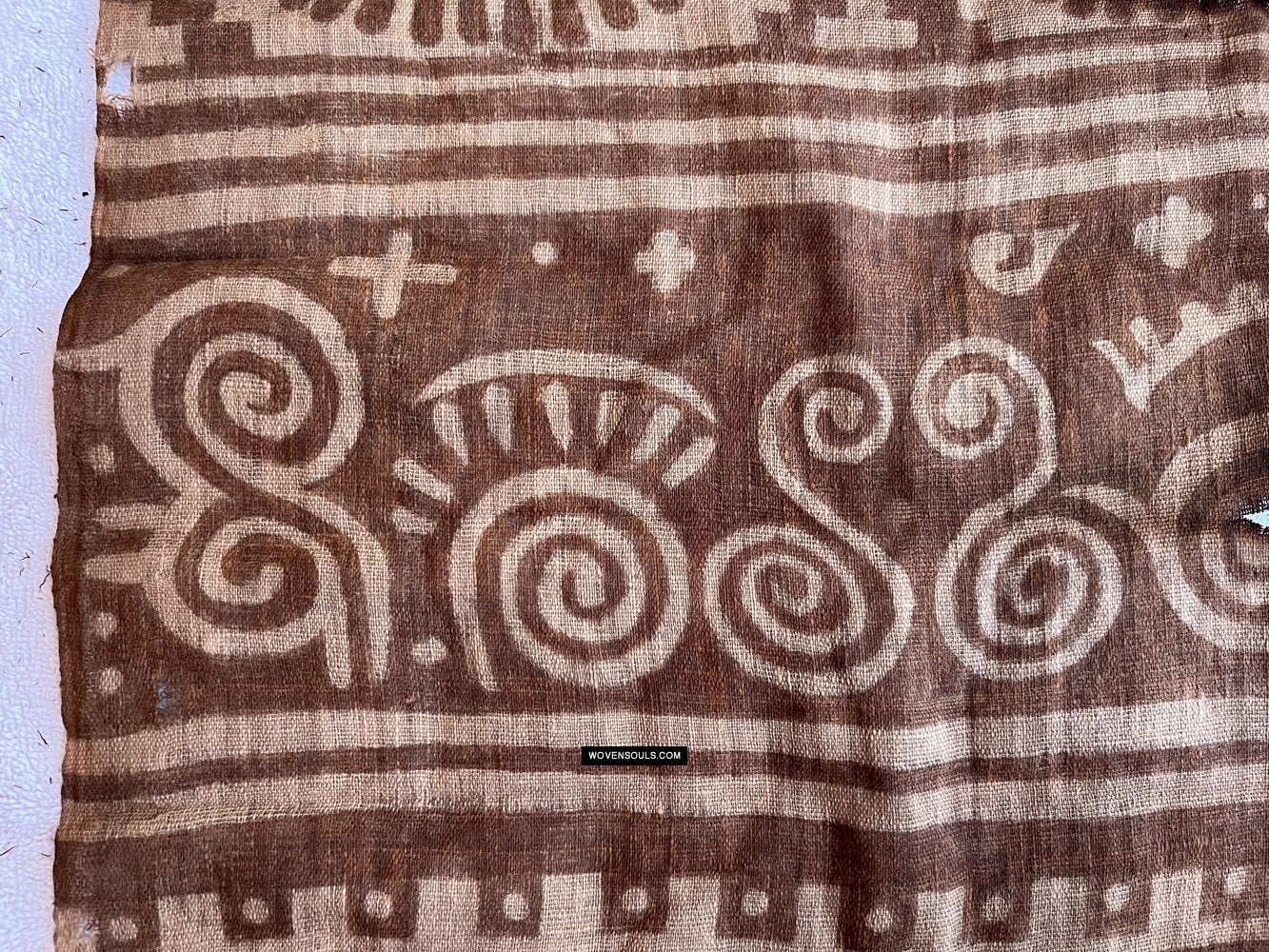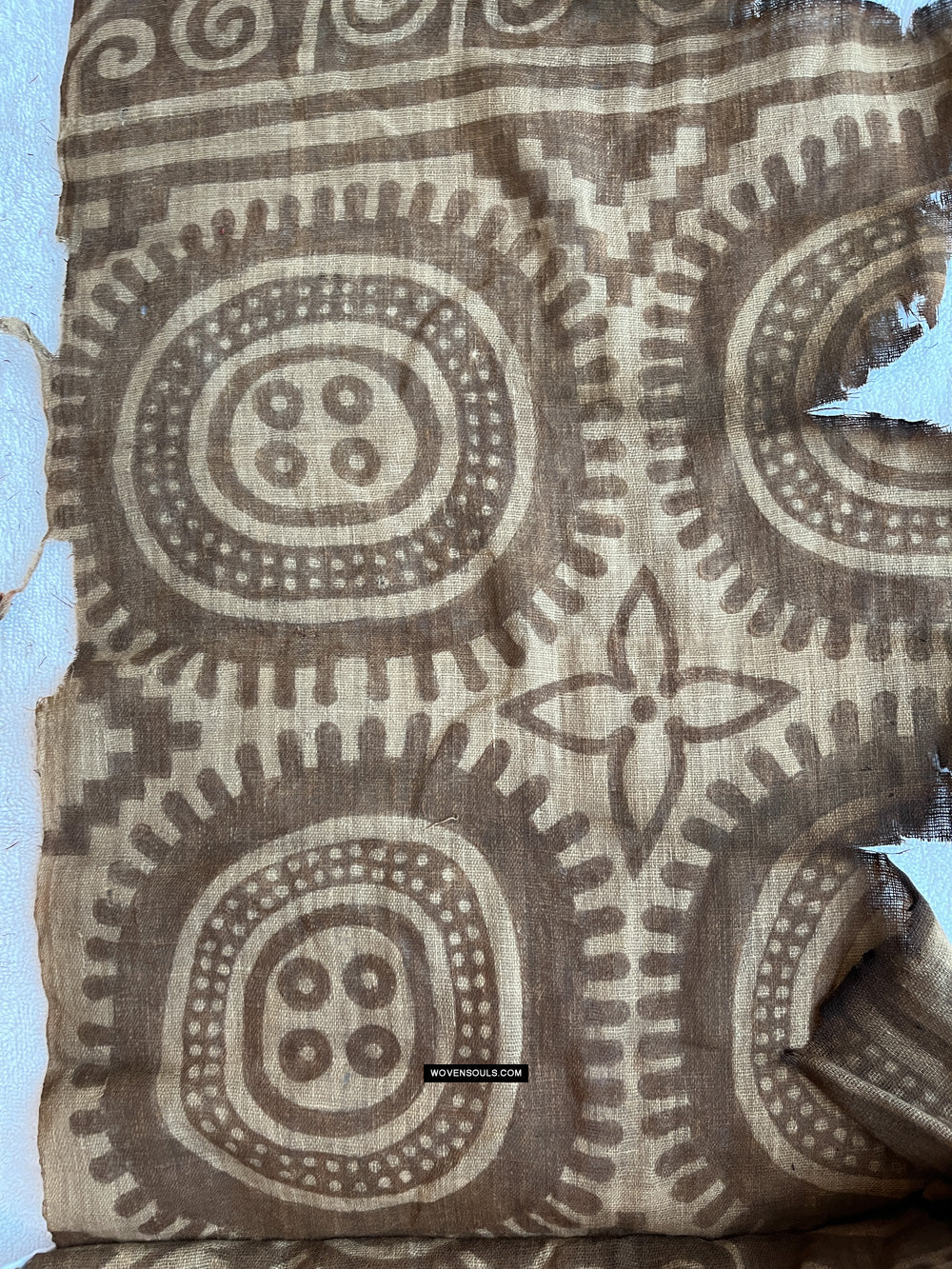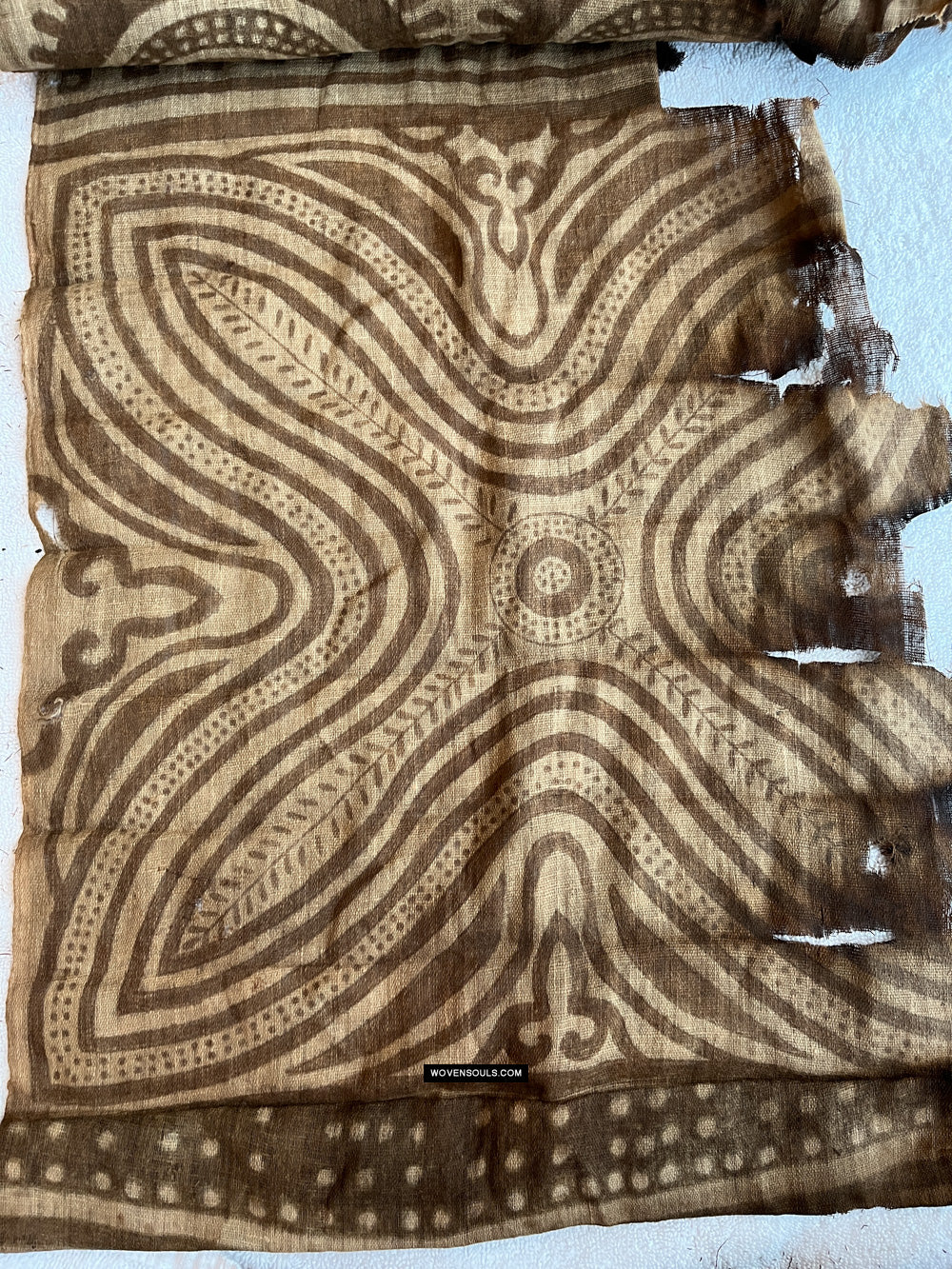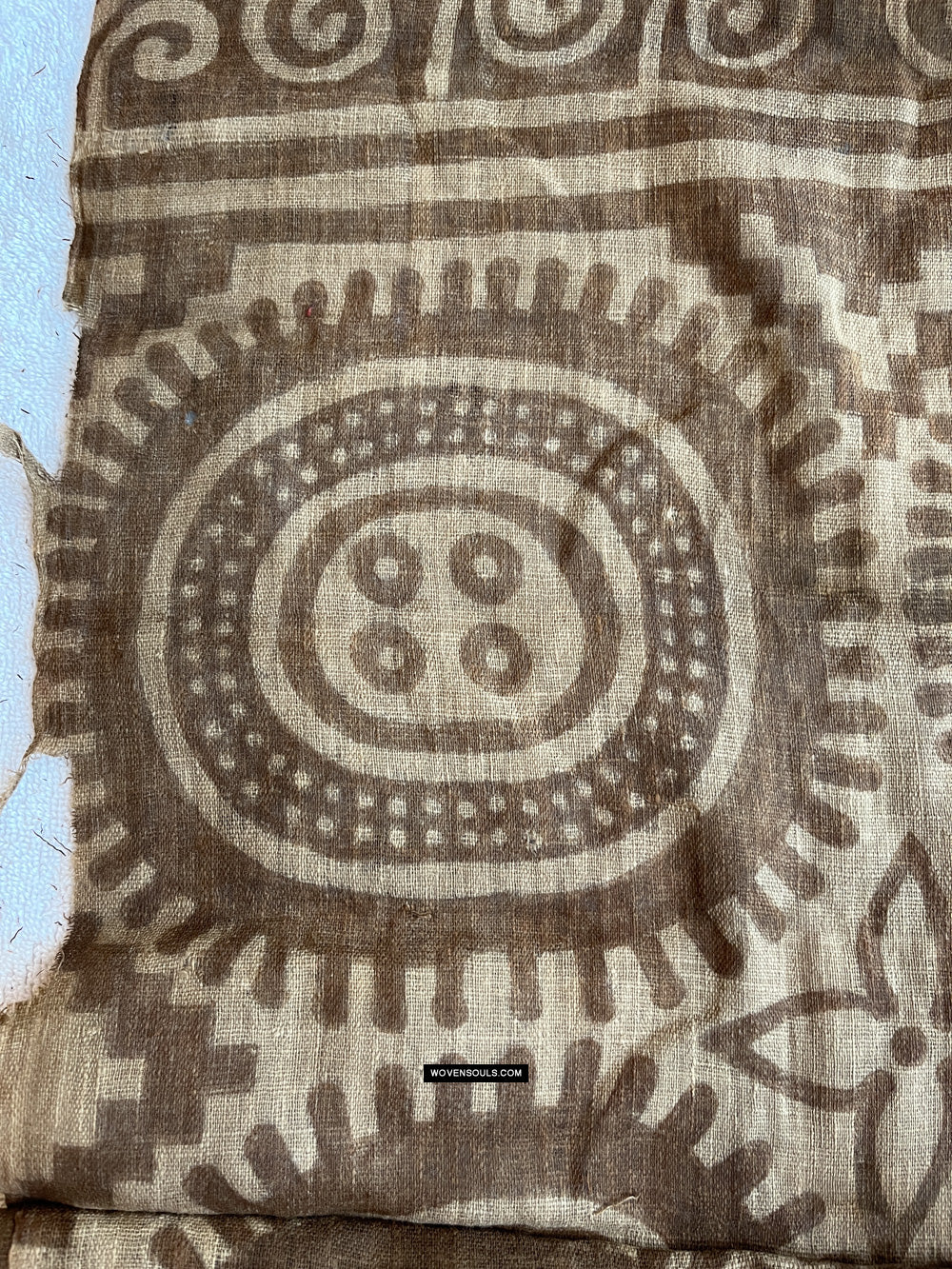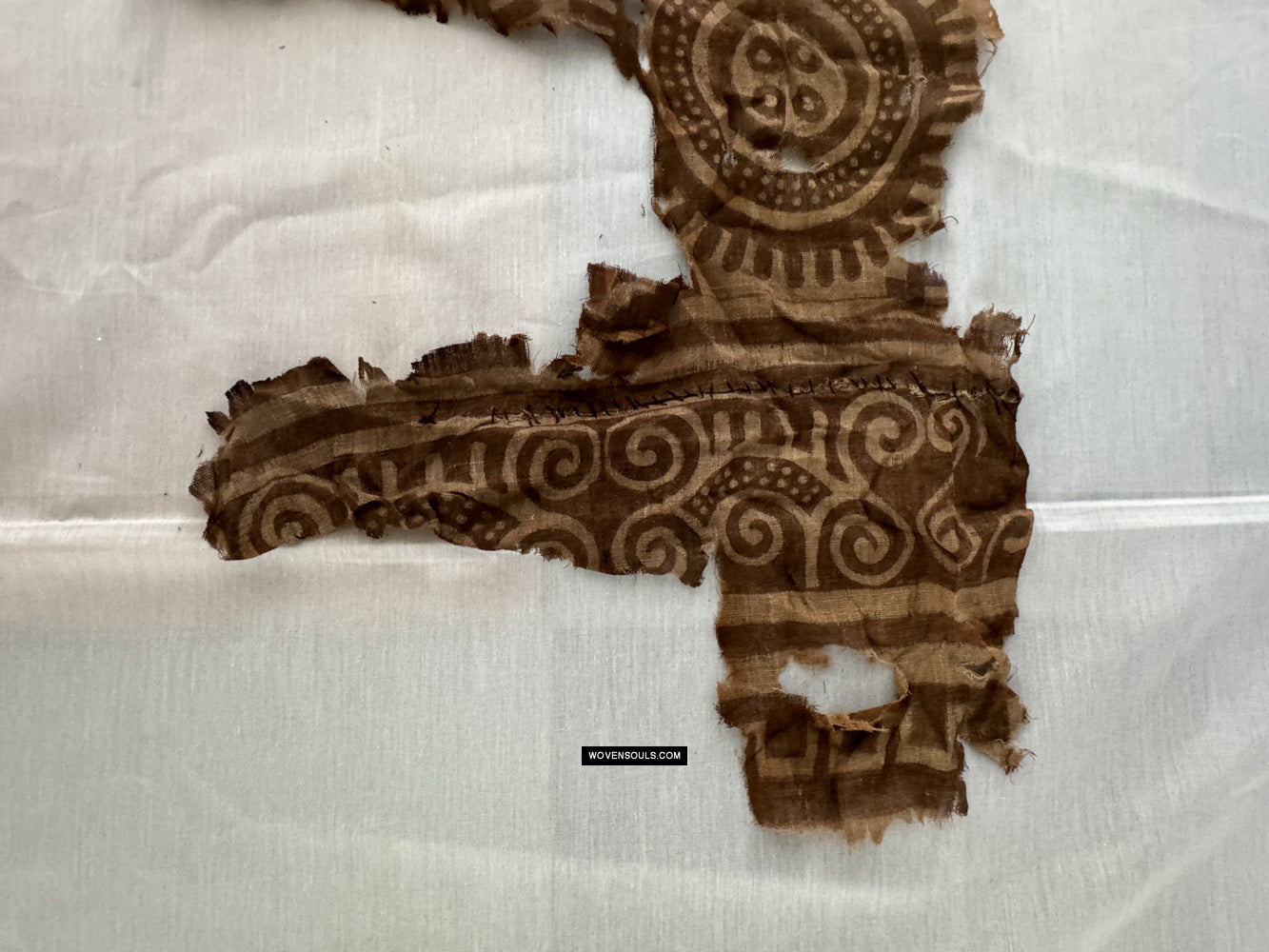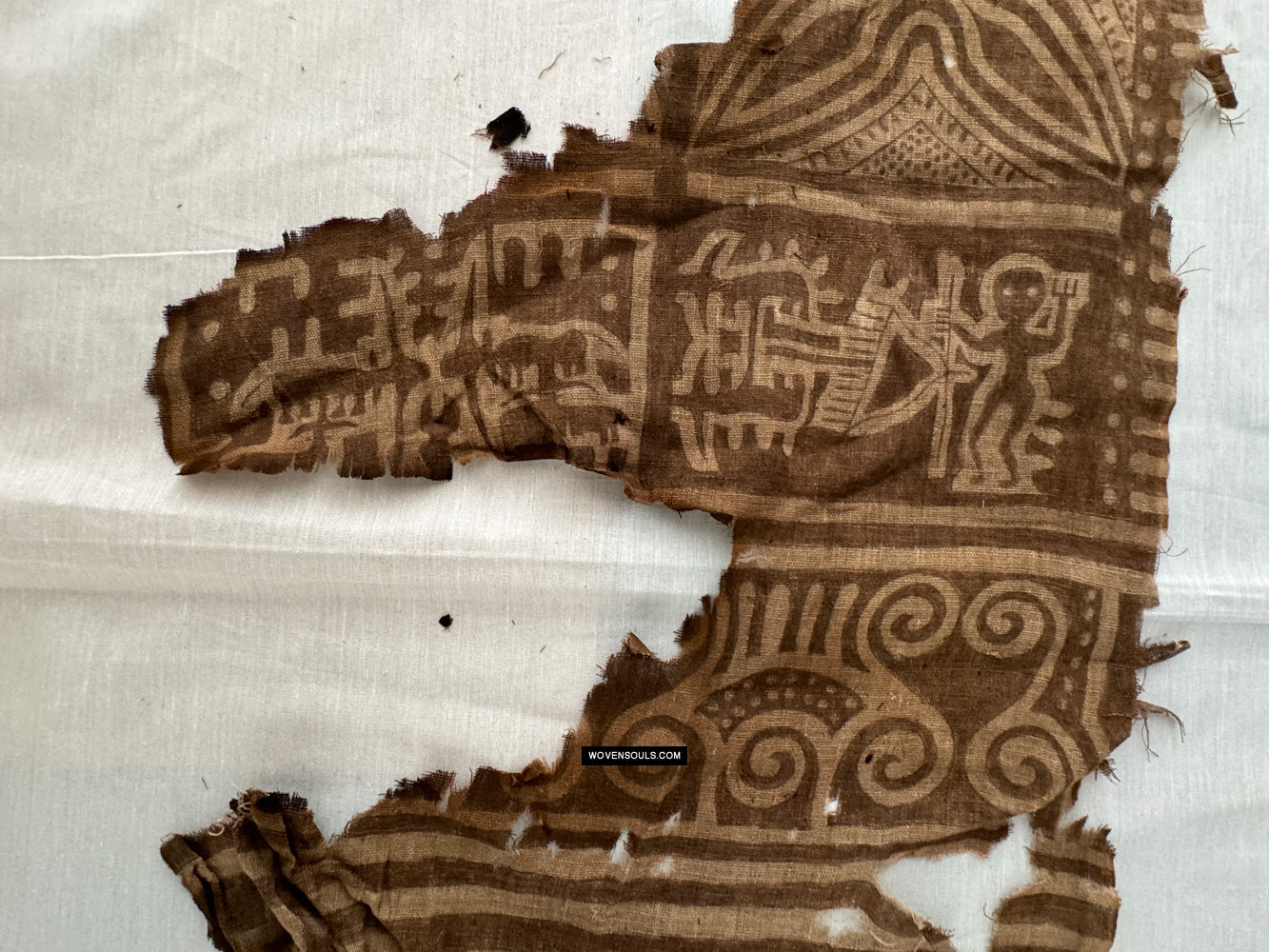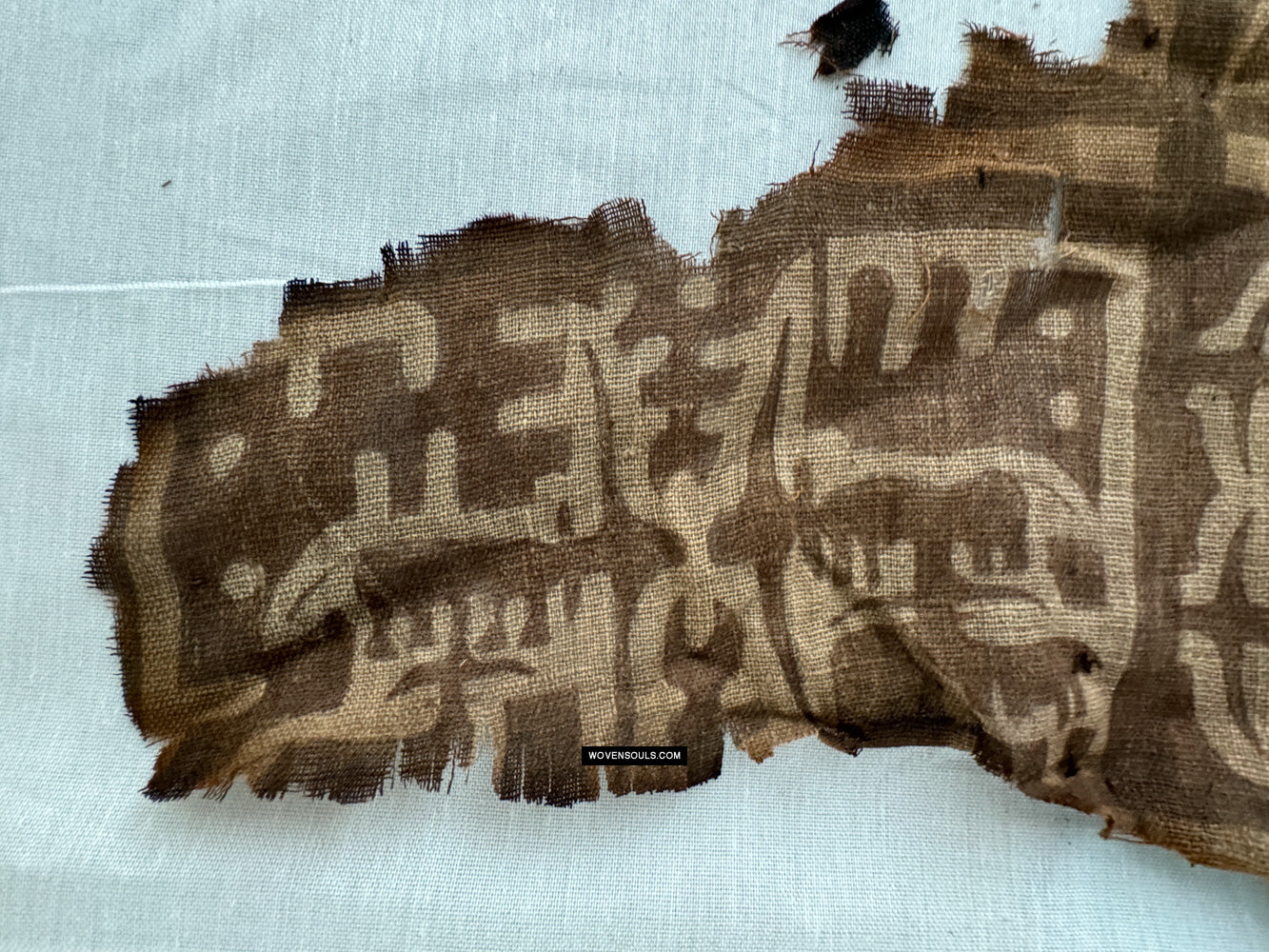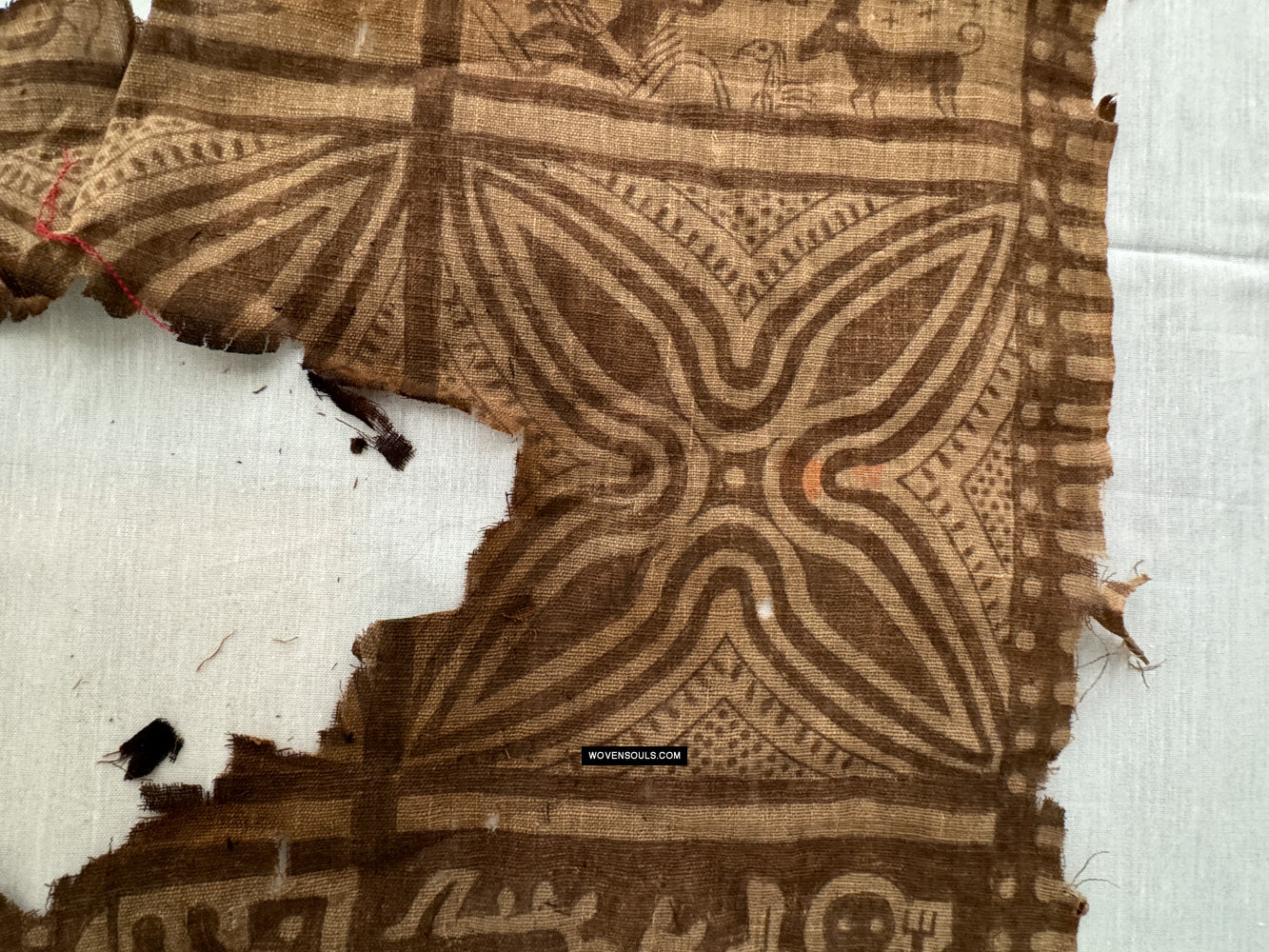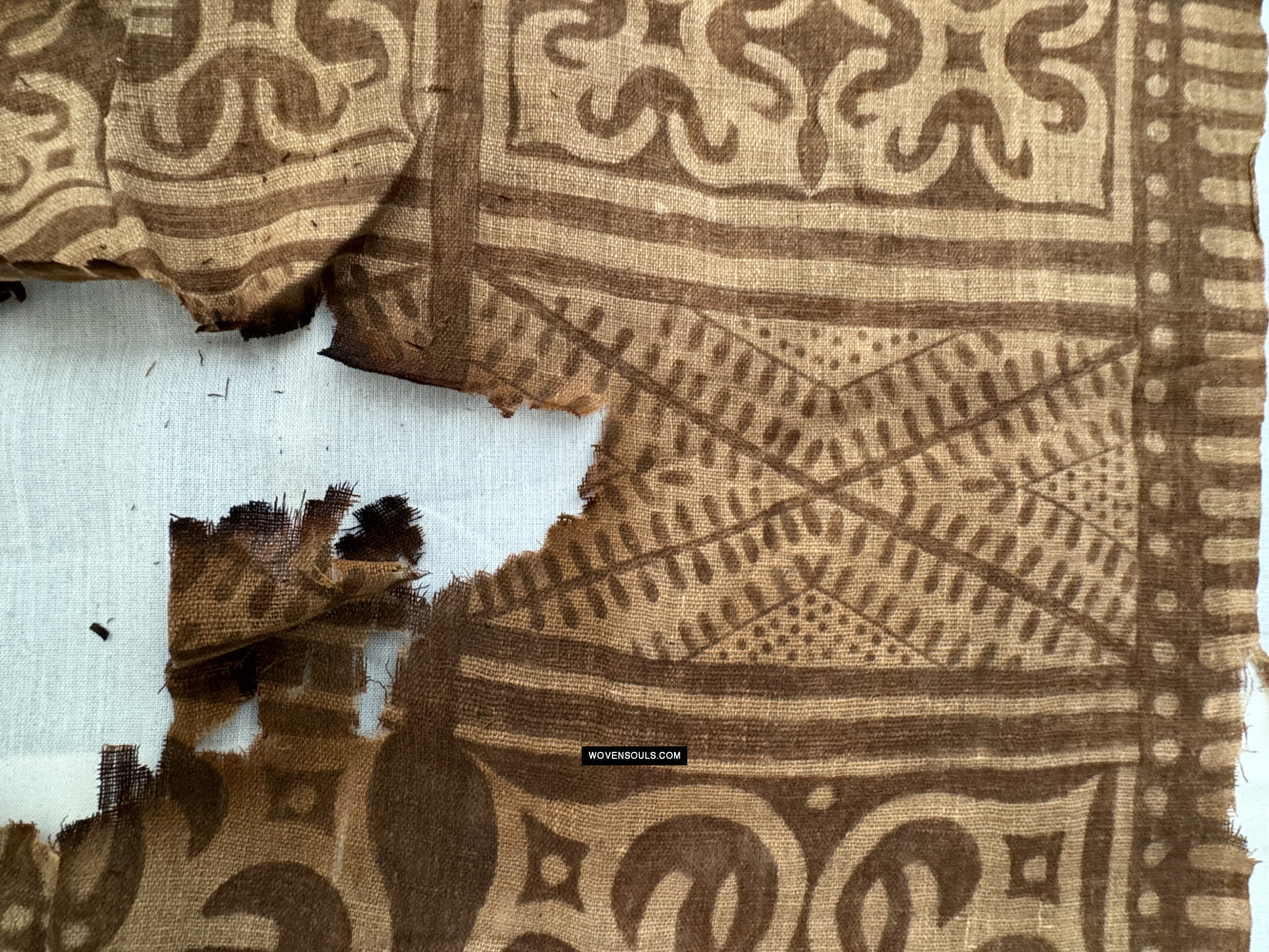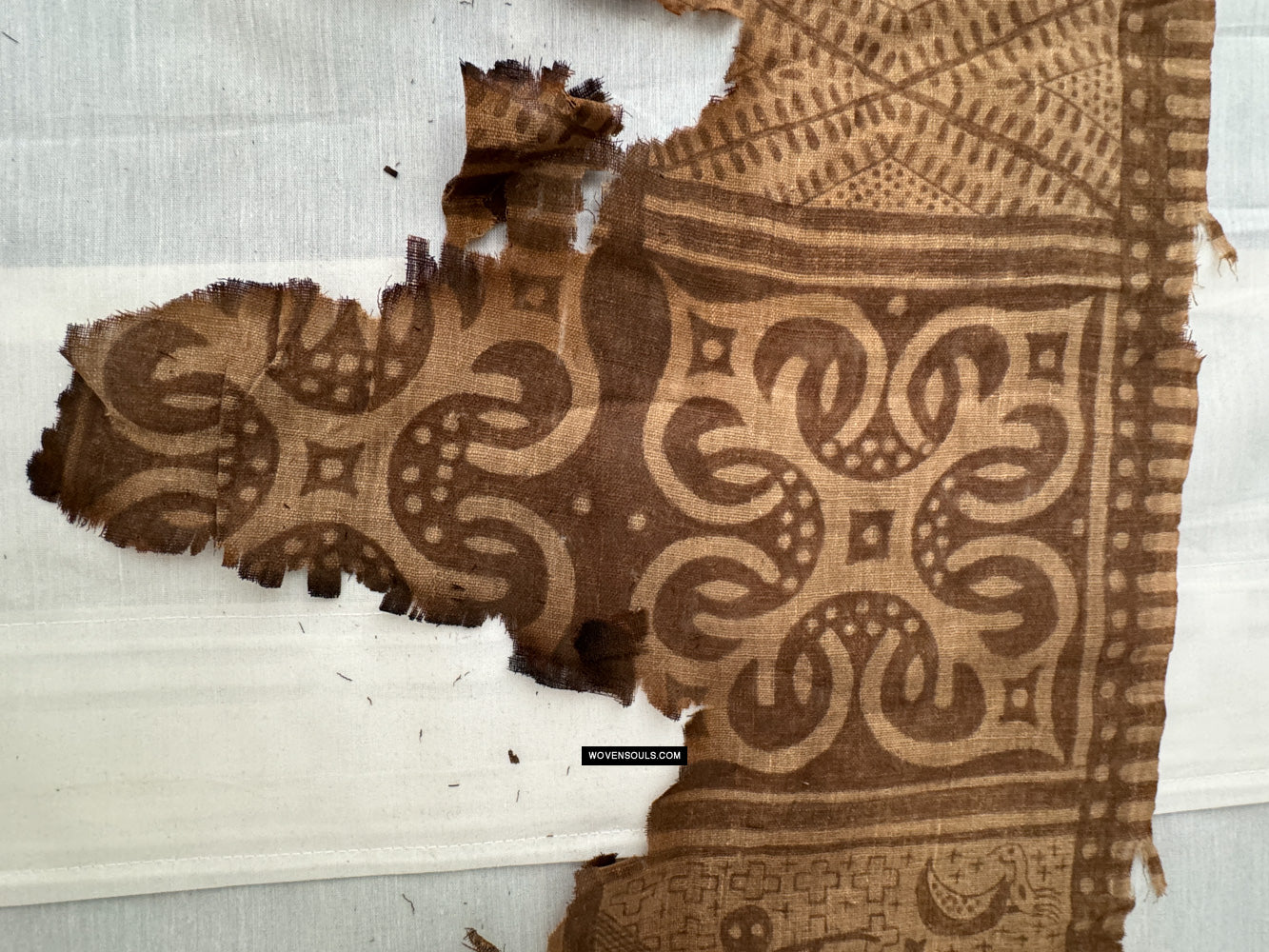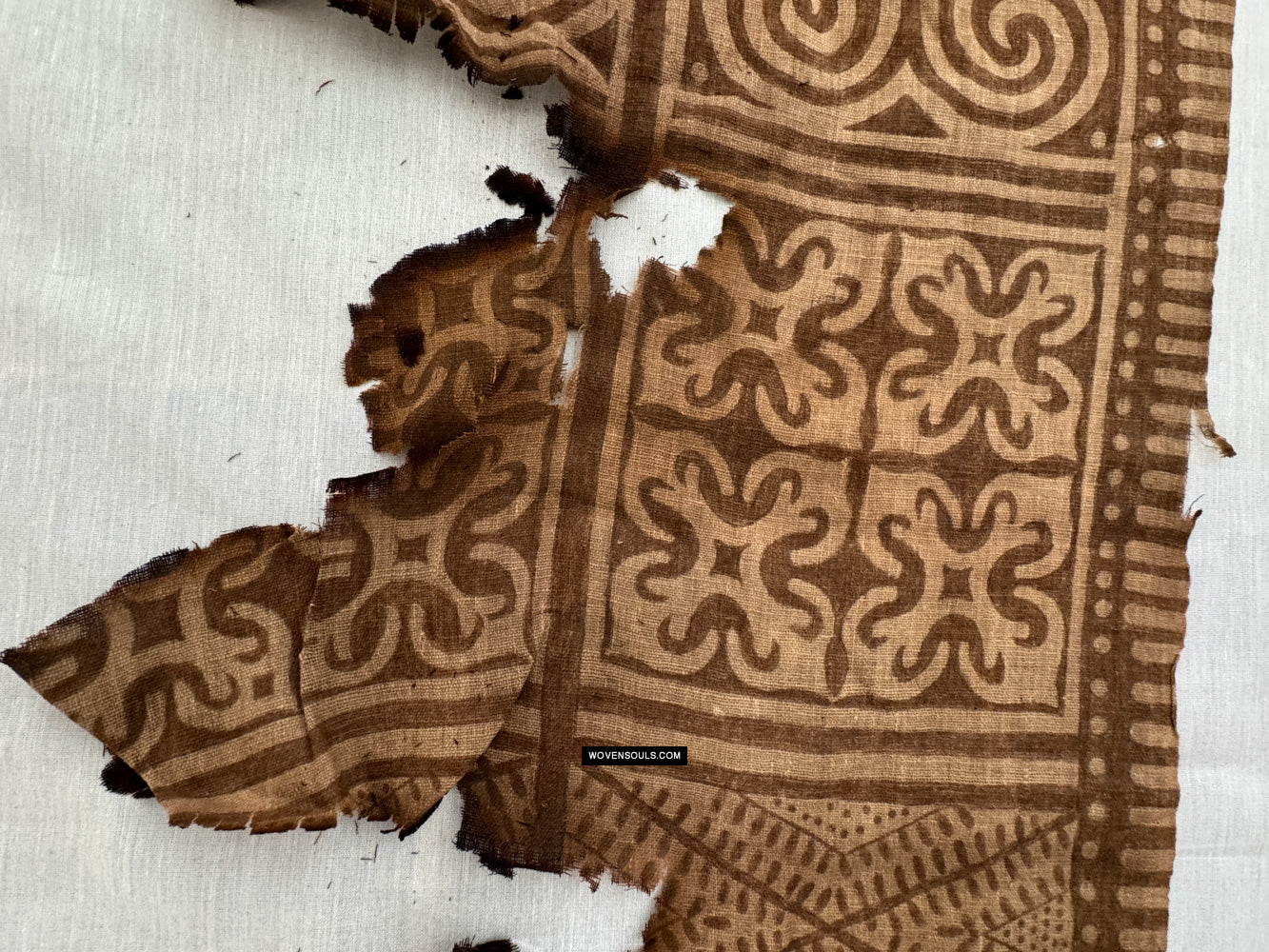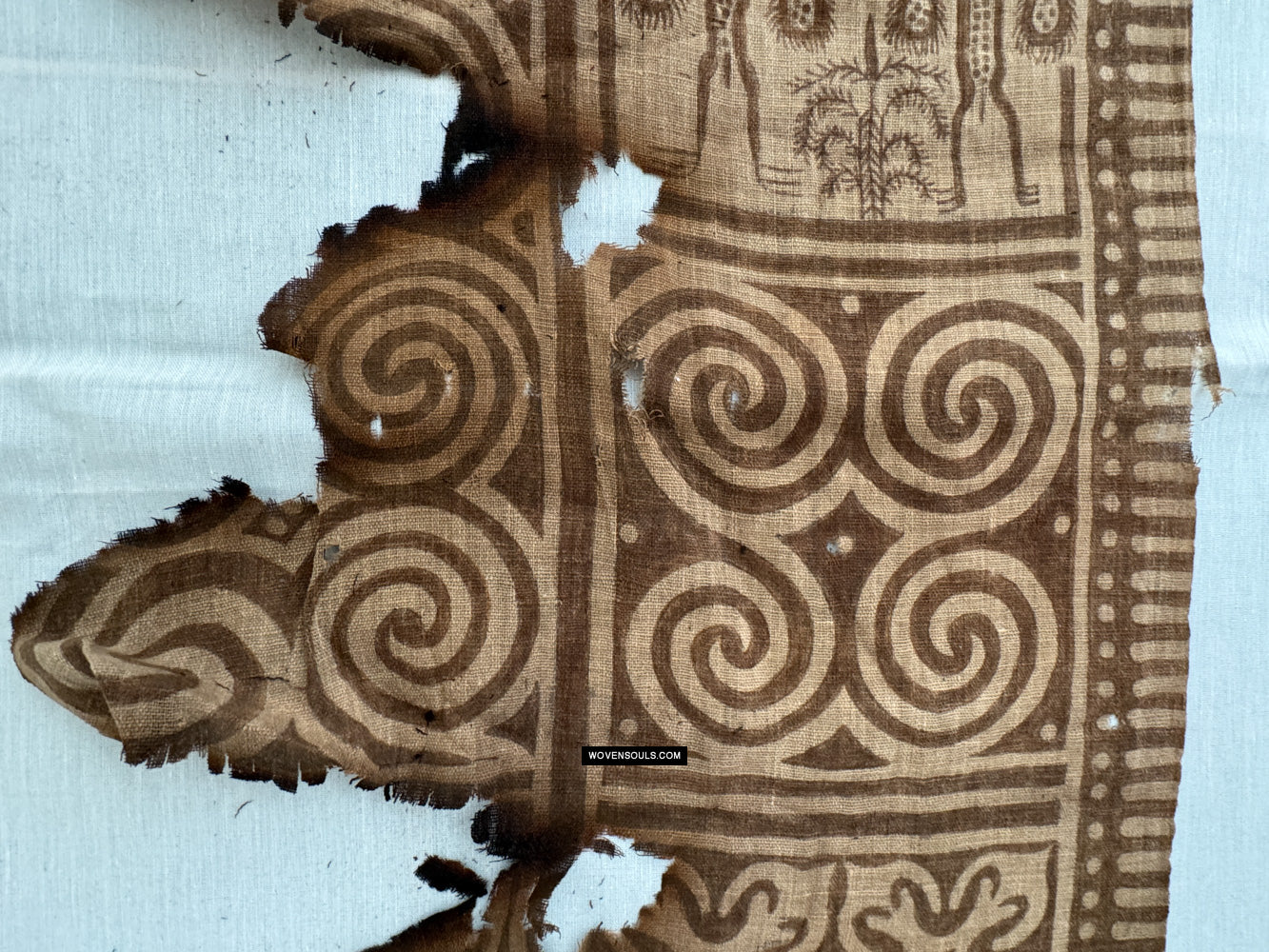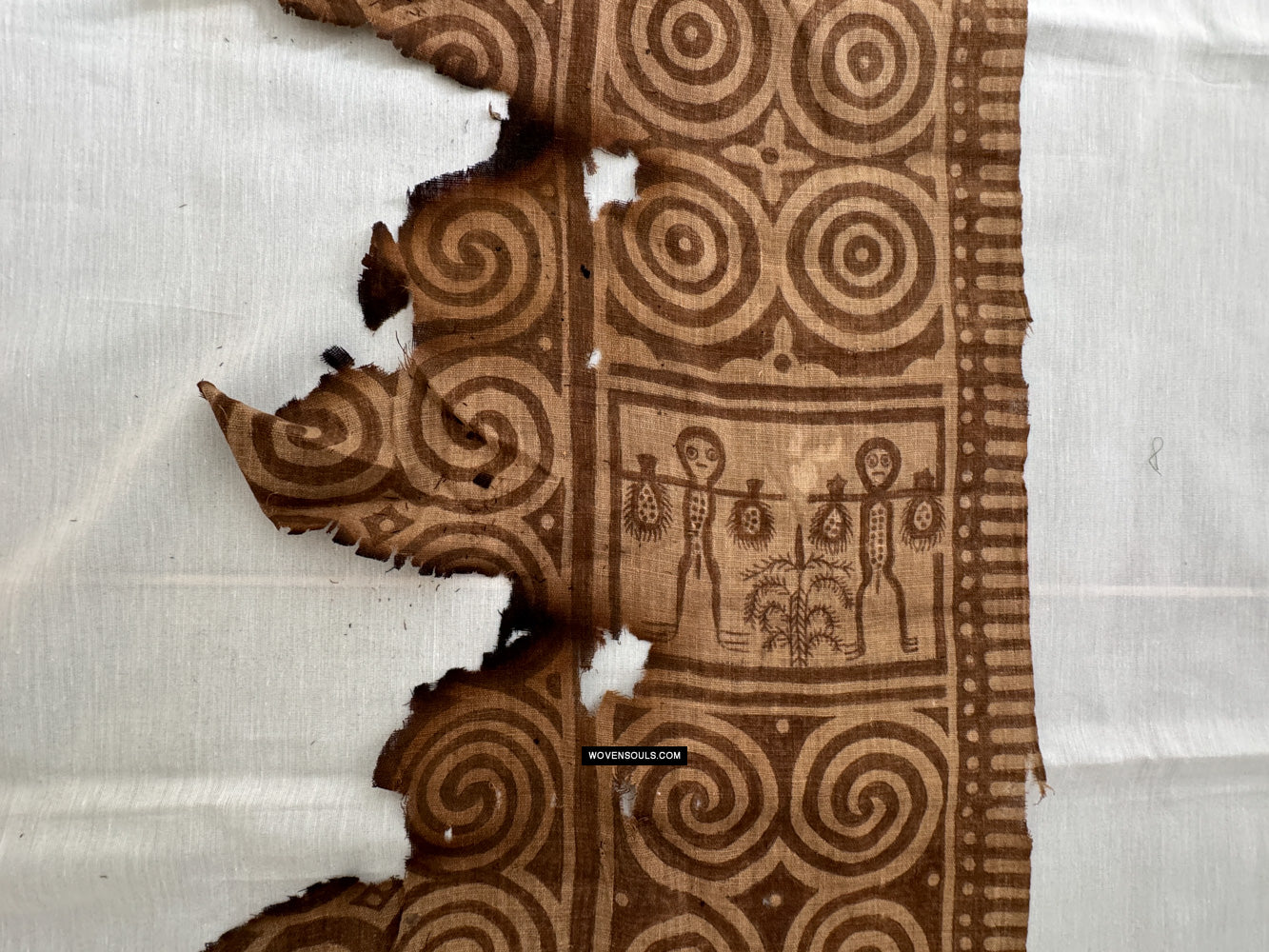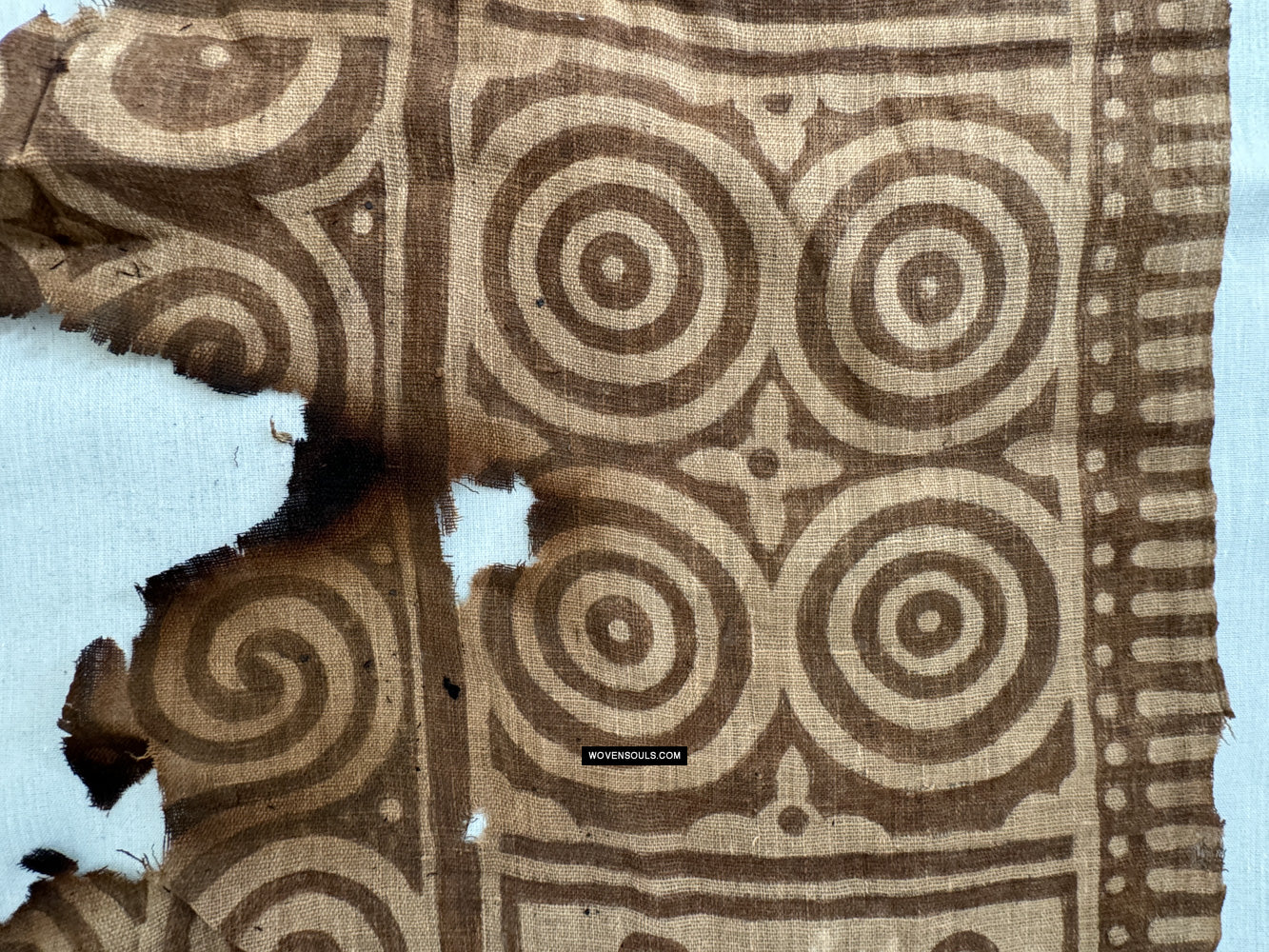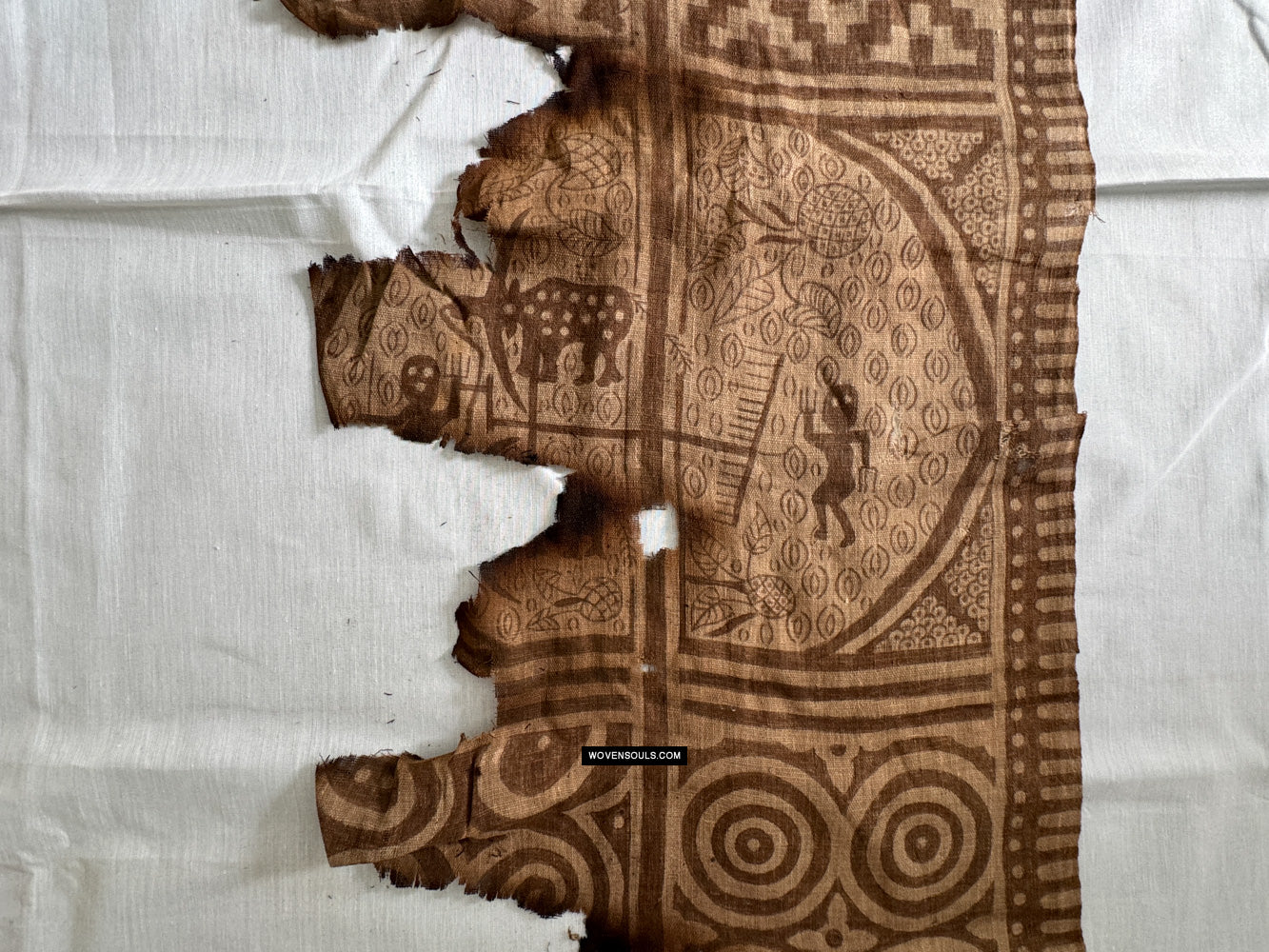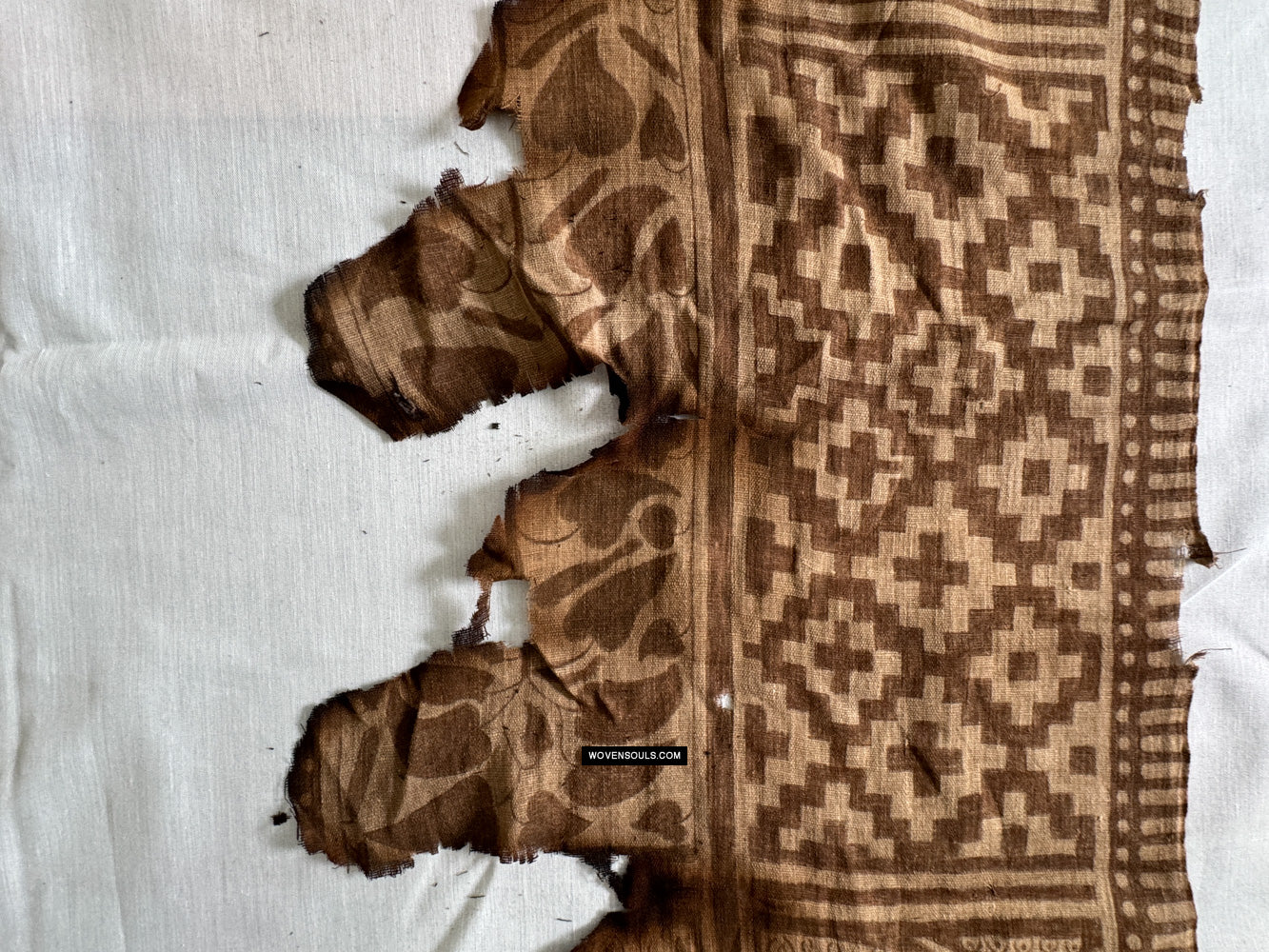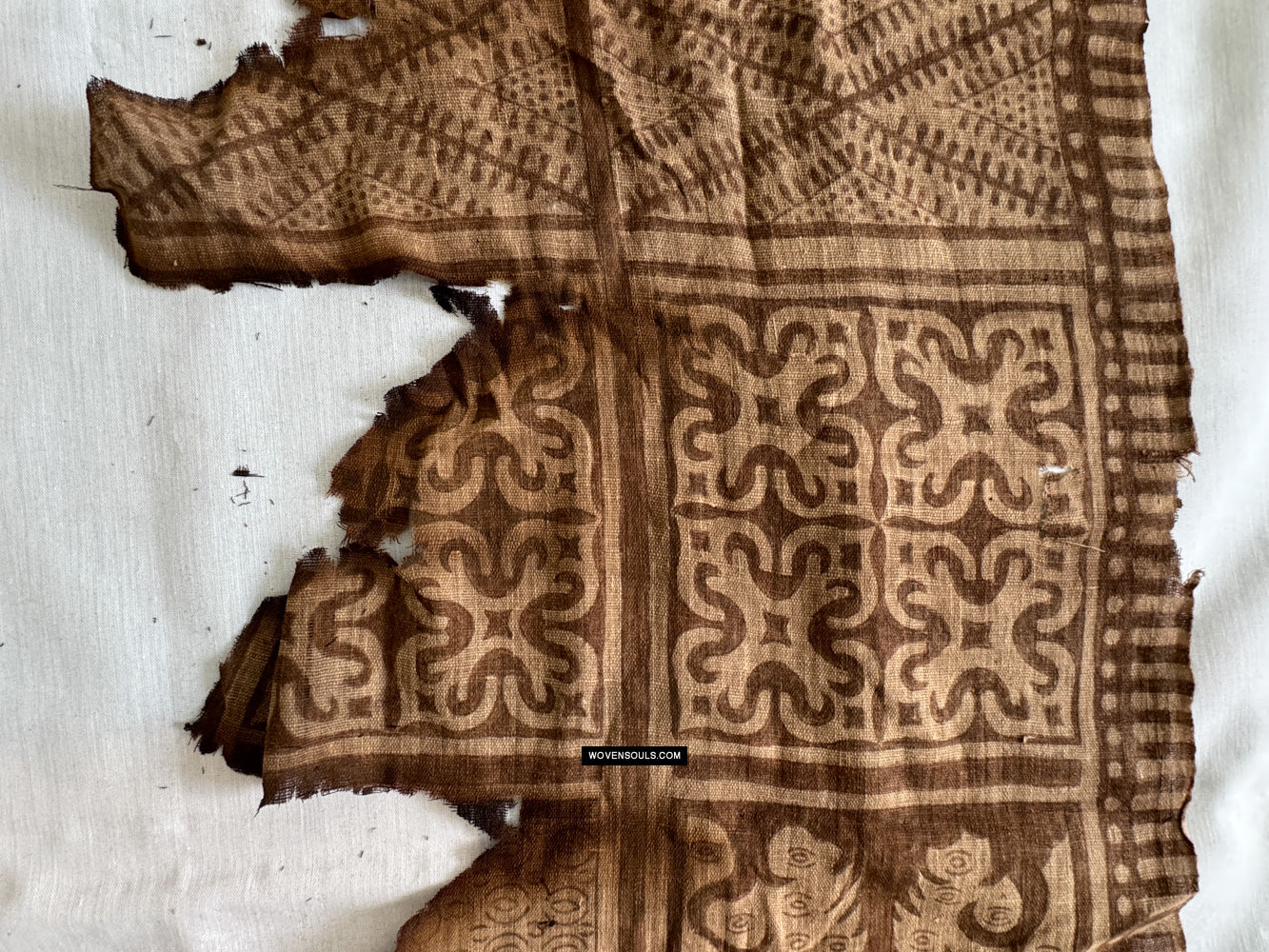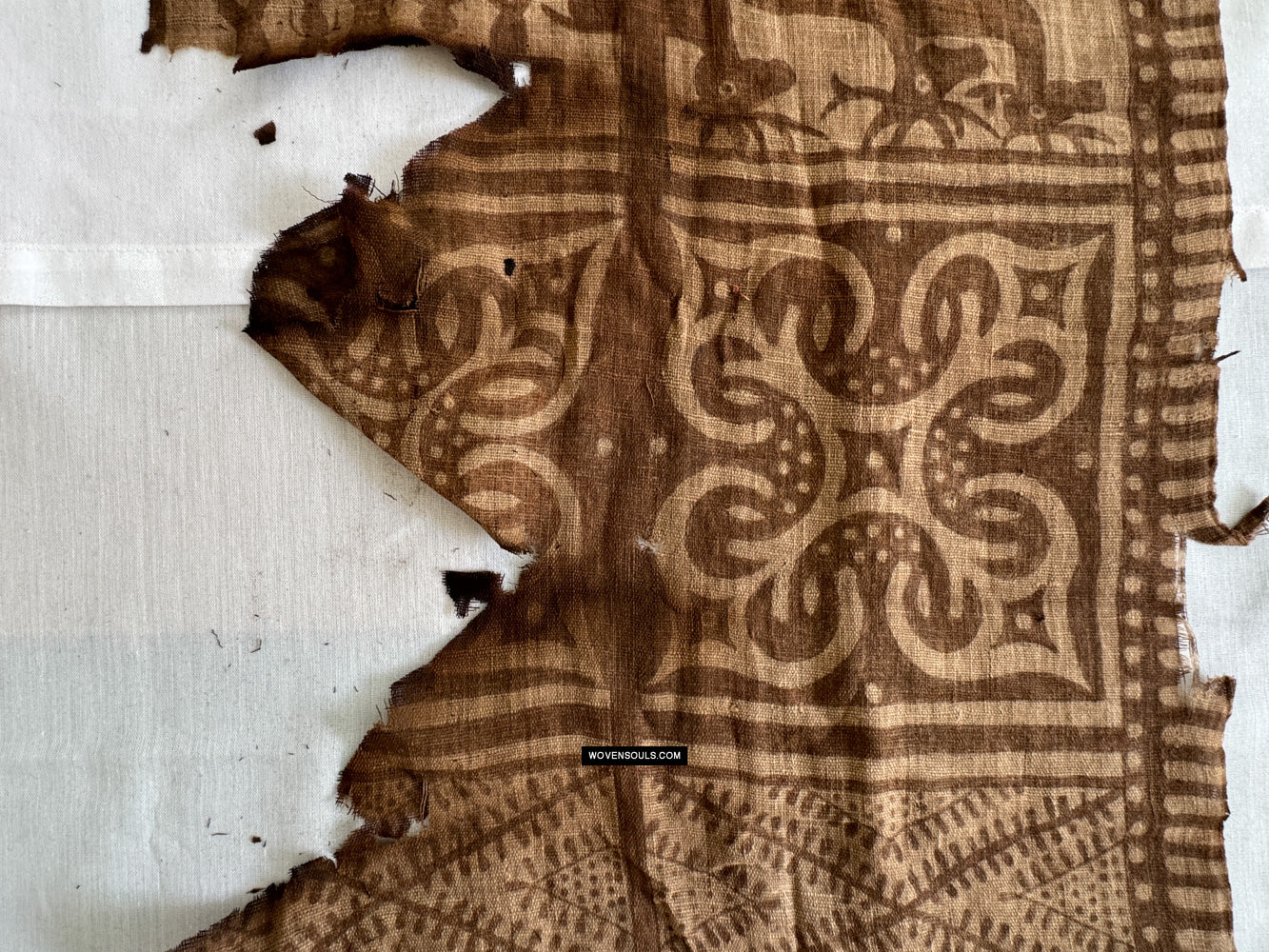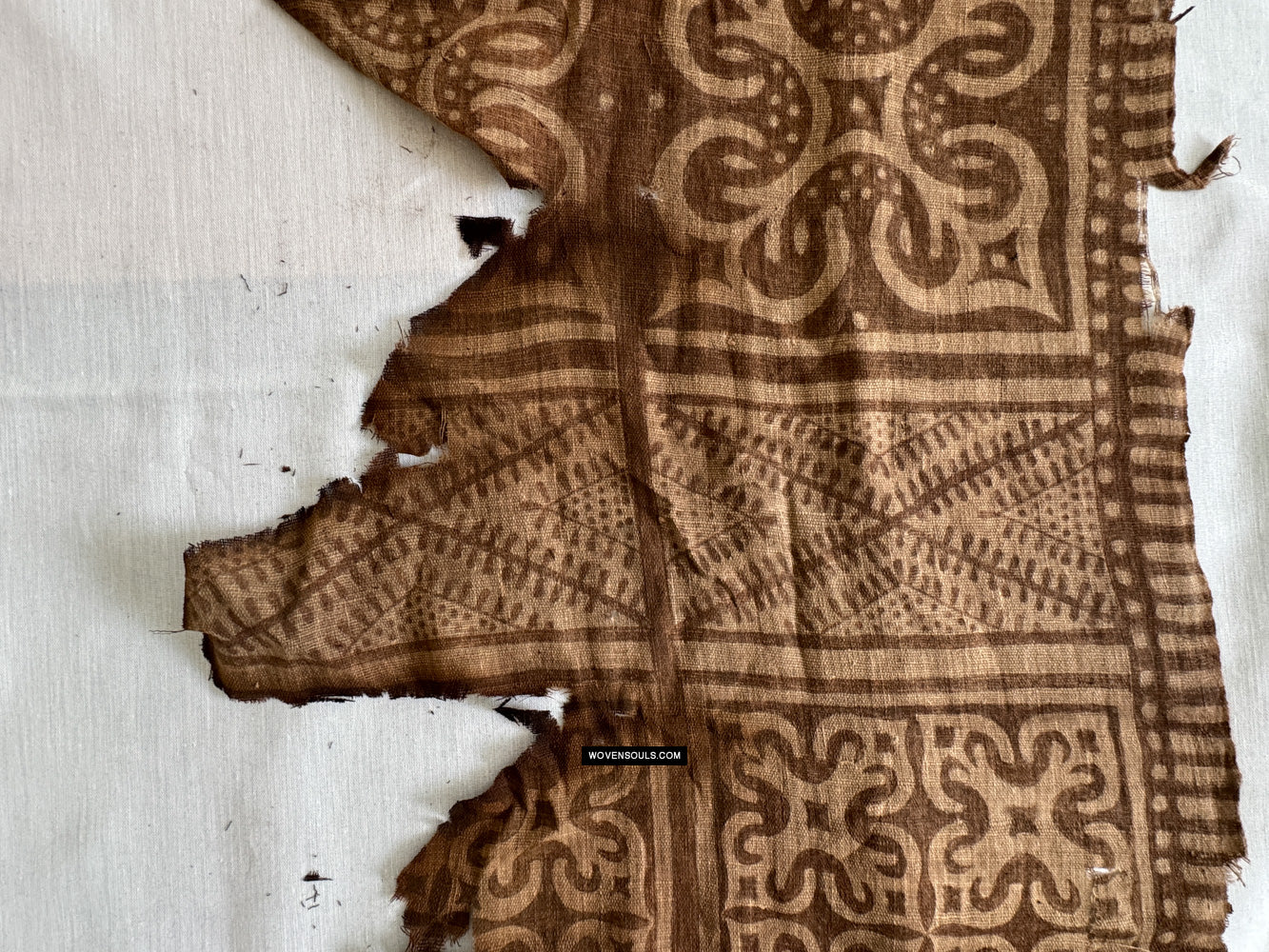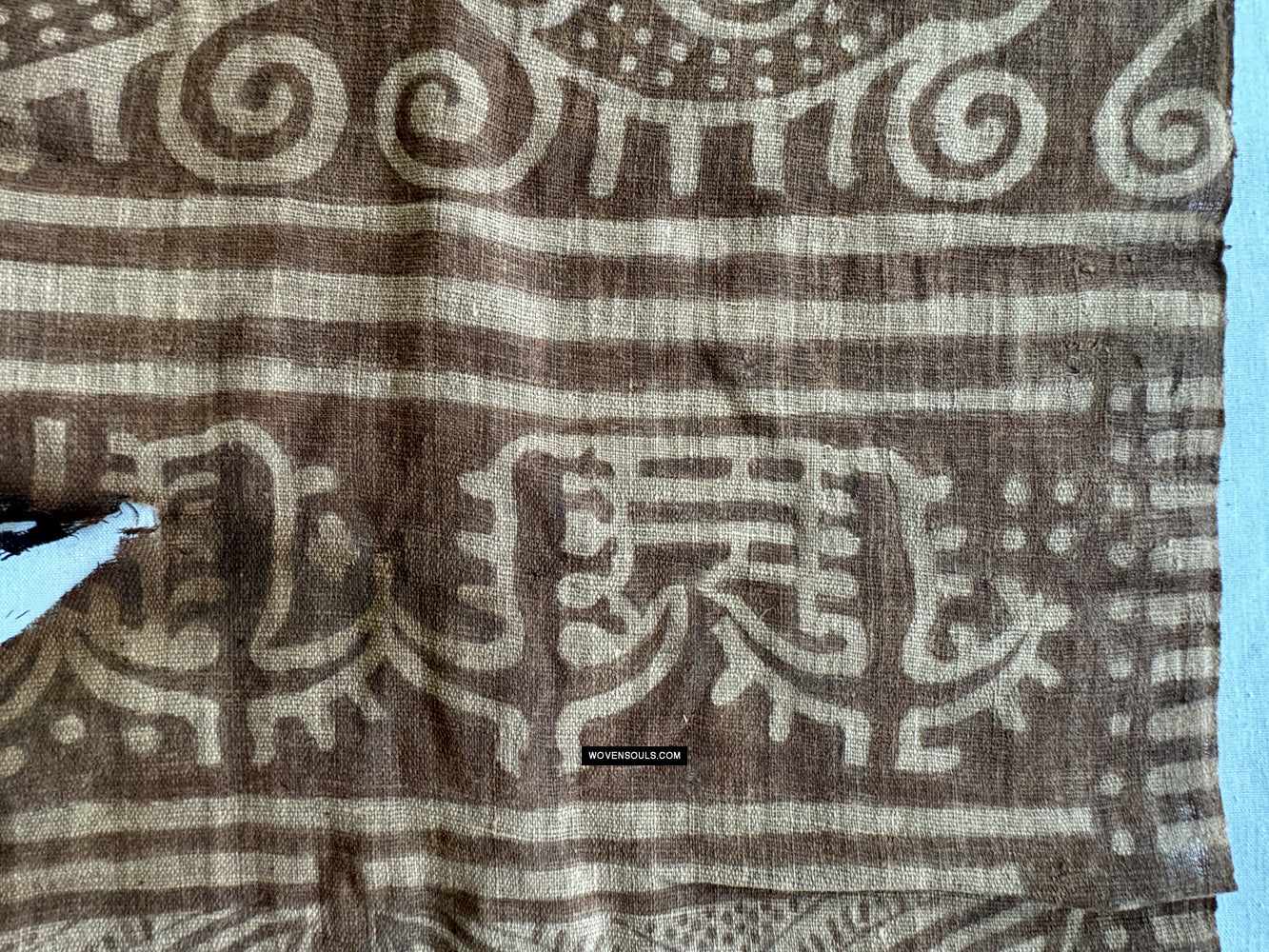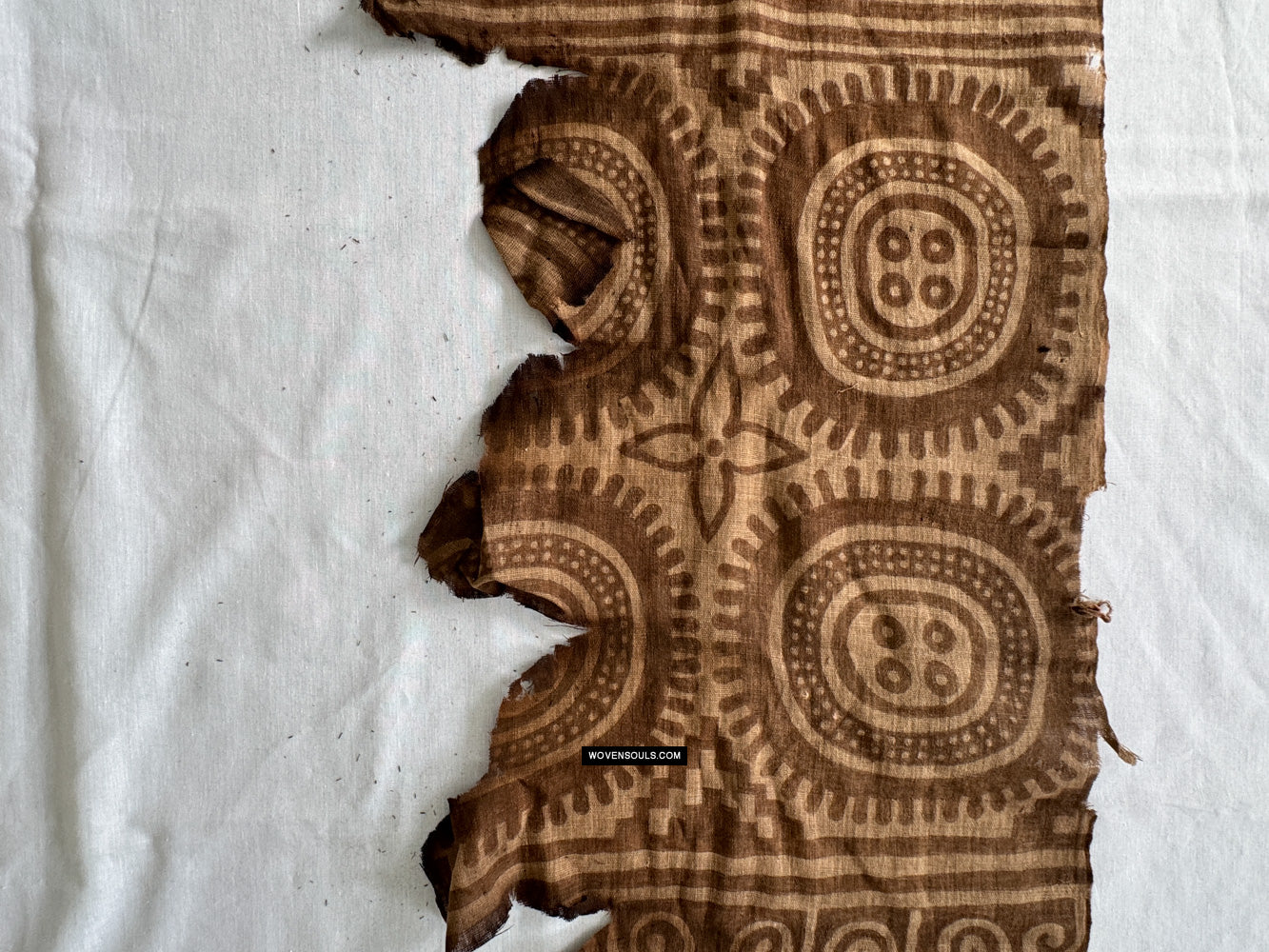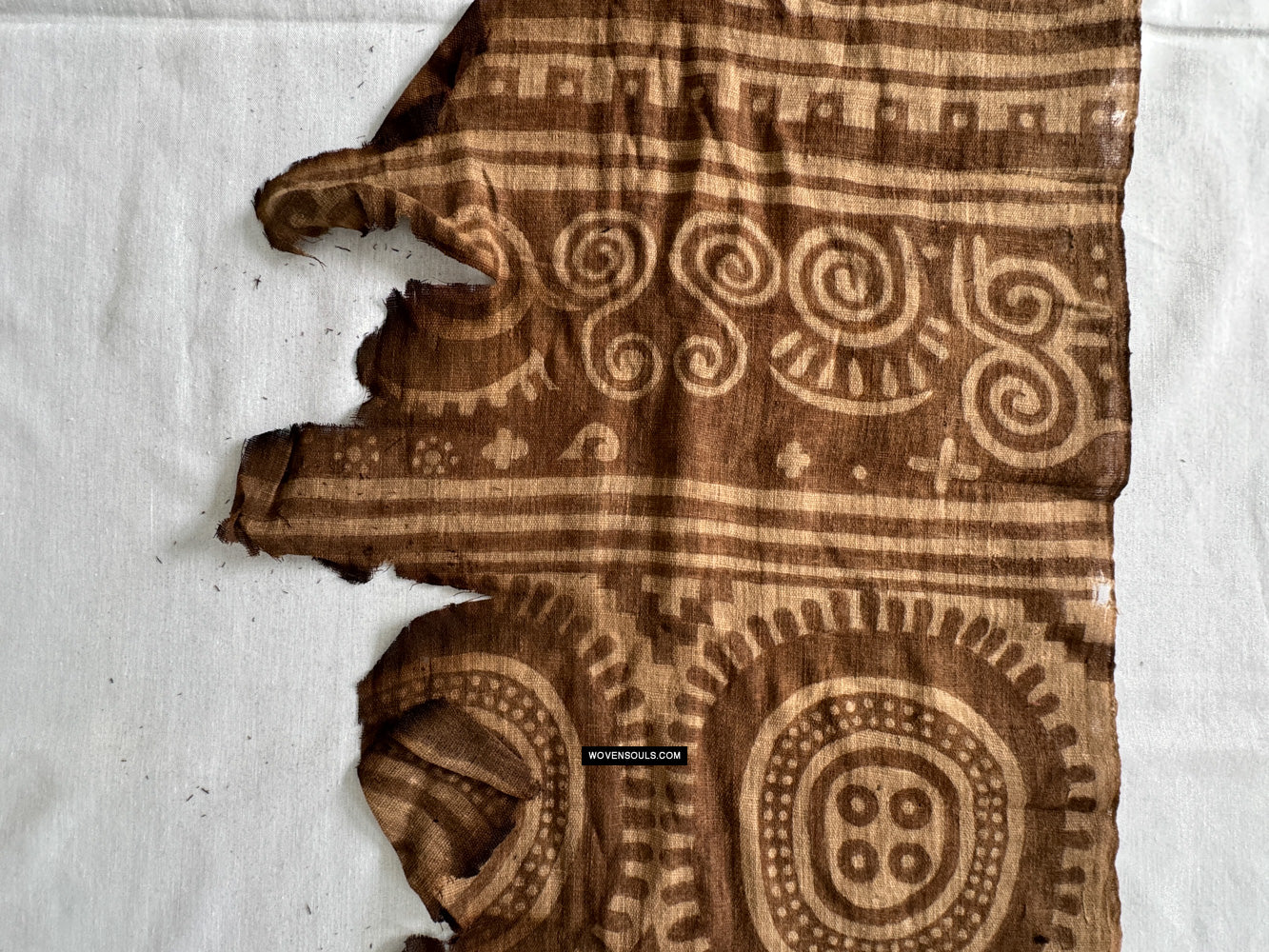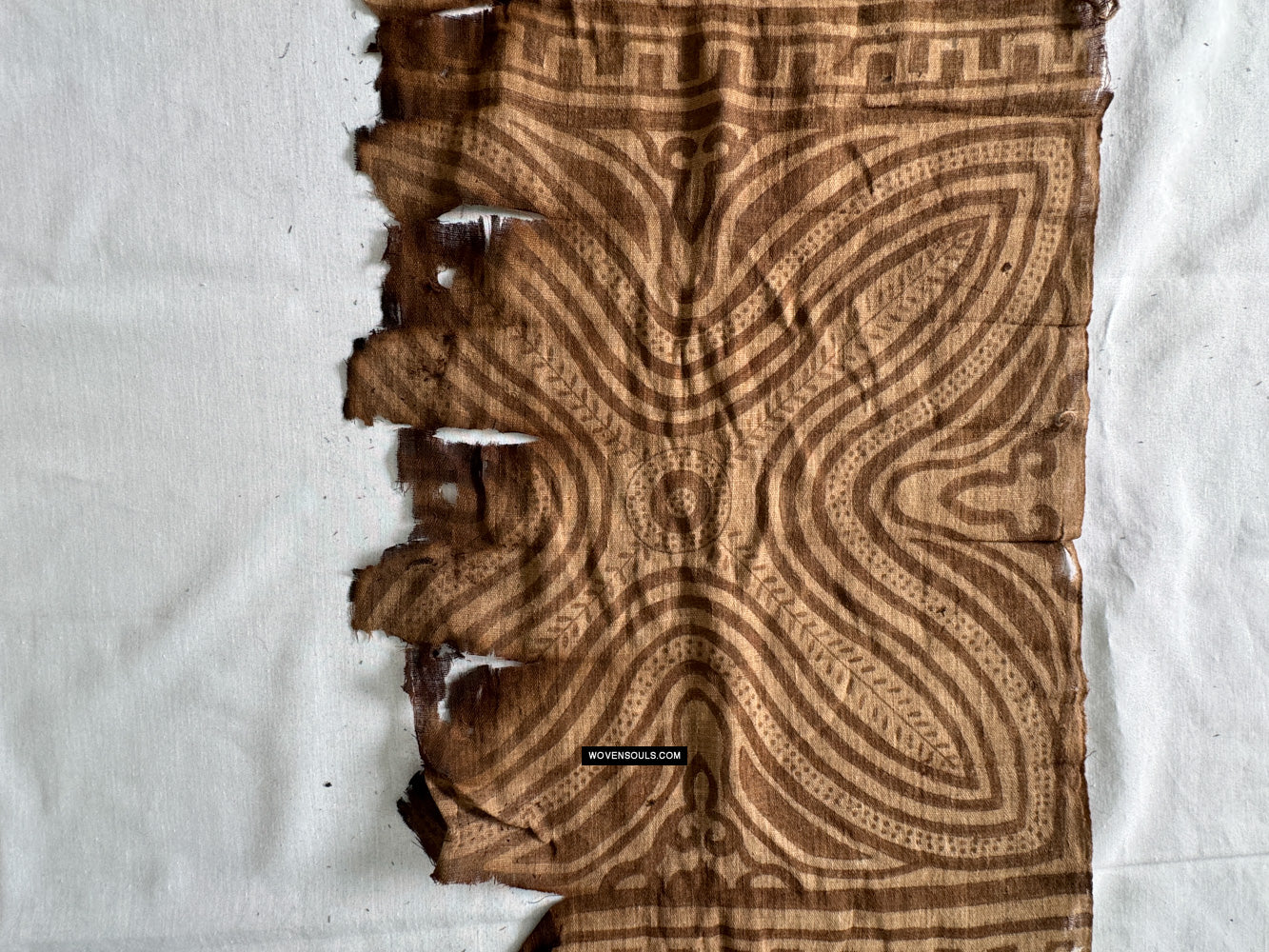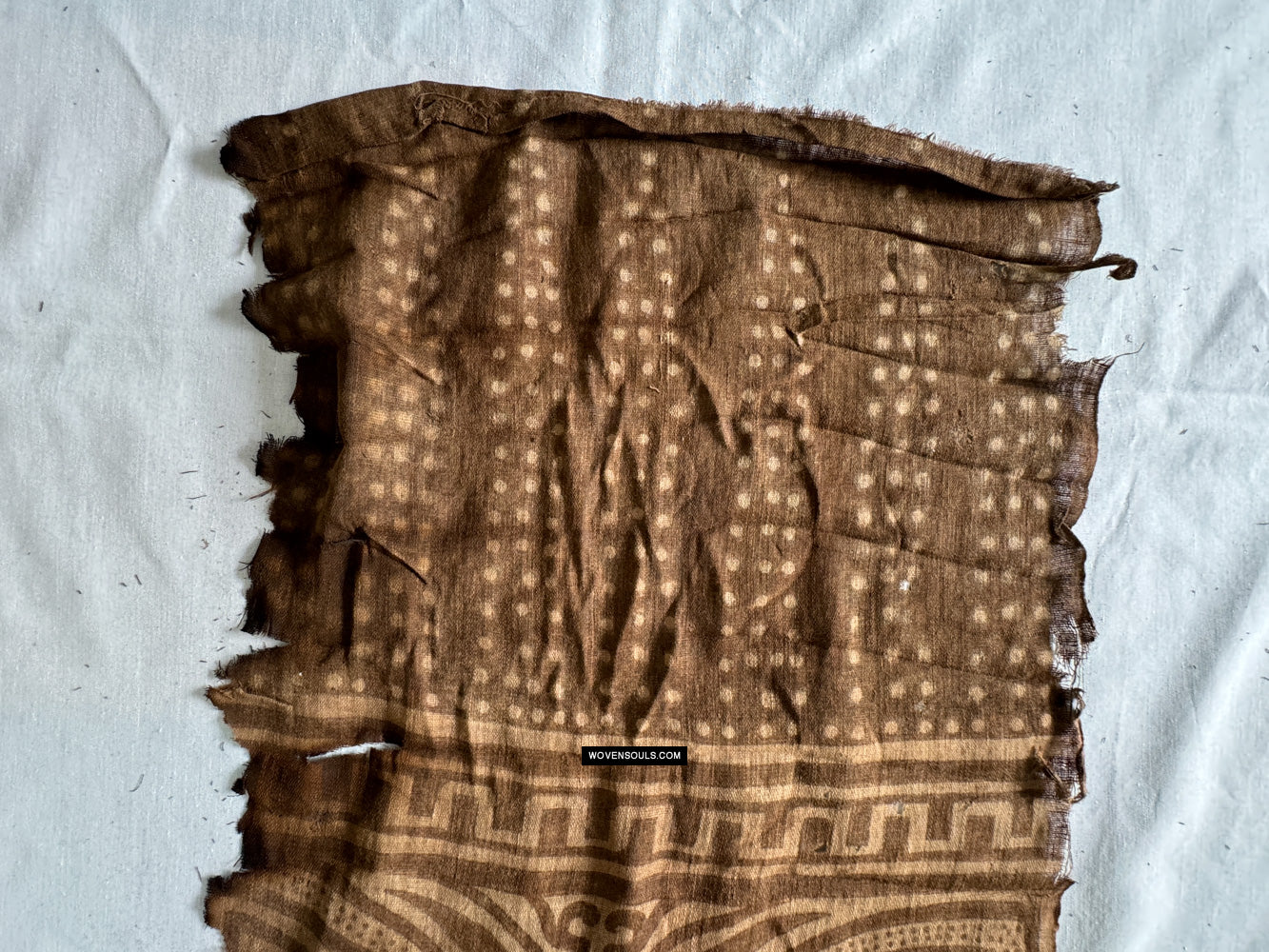1921 Antique Ceremonial Toraja Sarita Textile Fragment - Brown
Antique Ceremonial "Sarita" Cloth Banner from Toraja with Brown Natural Dyes
FOR MUSEUMS & SERIOUS COLLECTORS
This is a complete banner that is in fragmentary condition
Fine cotton base with rarely-seen Torajan khaki natural dye
Features several scenes with Humans
Very beautiful hand-drawn motifs
Estimated to be from the 1800s
Do have a look at the variety of motifs.
Also do look at the closeups to get an idea of the fine quality of cloth.
This was was saved from a fire and one edge has significant burns. The fabric along that edge is damaged, parts are missing, and the cloth that has survived is extremely fragile, brittle and crumbly.
Despite the damage and vulnerability, the superlative drawings on the banner make this a masterpiece.
Finding another similar one, even in museums, may be difficult, if not impossible.
These beautiful banners serve a variety of ritual / outdoor ceremonial purposes and are integrated into the lives of the people.
The variety of motifs is interesting and in most cases, the Sarita the same or similar arrangement of motifs on both sides of the textile.
Used to wrap bamboo poles or convey important visual symbolic messages during ceremonies.
For photo and video examples on the use of these Saritas, please have a look at the wovensouls blog.
For authentic Saritas that have been used in outdoor ceremonies, the condition is never perfect. Holes are caused by pinning these to bamboos as flags or for hanging displays around the house. These are subject to rain and windy conditions during the ceremonies and get faded and weather beaten over time. So any Sarita that is in perfect condition has probably been through very few actual ceremonies.
SIZE: 555 x 39 cm [About a meter longer than the other recent listings]
***
This item has spent a lifetime being used for the purpose of its creation with the original artist/user. Signs of this life lived heartily may be present on the piece in the form of stains, thread loss, loose threads, holes, tears, color run and other imperfections. Therefore the condition must be assumed to be “not” perfect. More photos of such imperfections will be provided on request.
***

